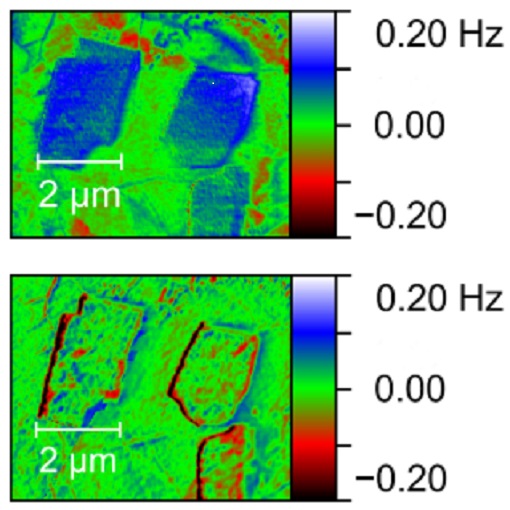
2D magnetic polymers
Exfoliation has become established method for fabrication of van der Waals (vdW) materials. Yet, it is less suitable in case of vdW magnets since many of them are instable at ambient conditions. The group of Eugenio Coronado (University of Valencia, Spain) prepared and studied 2D magnets utilizing pre-synthetic functionalization and subsequent exfoliation of layered magnetic coordination polymers featuring Fe(II) centers and different benzimidazole derivatives. They characterized mechanical and magnetic properties of 2D magnetic polymers. Utilizing an attoMFM microscope in an attoDRY1000 cryostat, they identified magnetic ordering in polymers, as well as the signature of the transition from a canted antiferromagnetic phase to a paramagnetic phase. Their study renders 2D magnetic polymers as promising playground for studying fundamental aspects of 2D magnetism.
This measurement was realized with the attoDRY1000, and the attoAFM I.
Further reading:
J. López-Cabrelles etJ. al., Nature Chemistry 10, 1001 (2018)
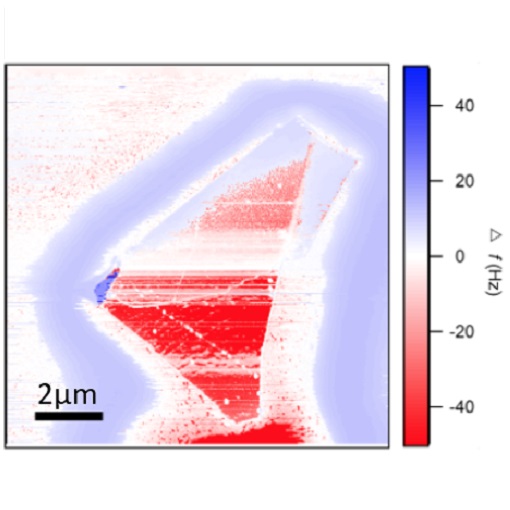
Beyond Ising and Heisenberg
Properties of low-dimensional magnets are strongly influenced by higher-order exchange interactions and quantum effects. The same holds for a van der Waals (vdW) magnet CrI3, which is a quantum material with magnetic properties that cannot be described by Ising or Heisenberg model alone, as demonstrated in a collaboration lead by Eugenio Coronado (University of Valencia, Spain), Kostya Novoselov (National University of Singapore, Singapore & University of Manchester, UK) and Elton Santos (University of Edinburgh, UK). Moreover, the metastability of magnetic domains in CrI3 induces a homogeneous magnetization or even a single domain over the entire surface, which has been imaged by an attoMFM in an attoDRY1000 cryostat. Such domains exhibit hybrid characteristics of both Neel and Bloch type. This study exemplifies how intricate magnetism of vdW magnets can be understood by combining experimental techniques with theoretical calculations, which is a prerequisite of applications of 2D magnets.
This measurement was realized with the attoDRY1000, and the attoAFM I.
Further reading:
D. Abdul Wahab et al., Advanced Materials 33, 2004138 (2021)
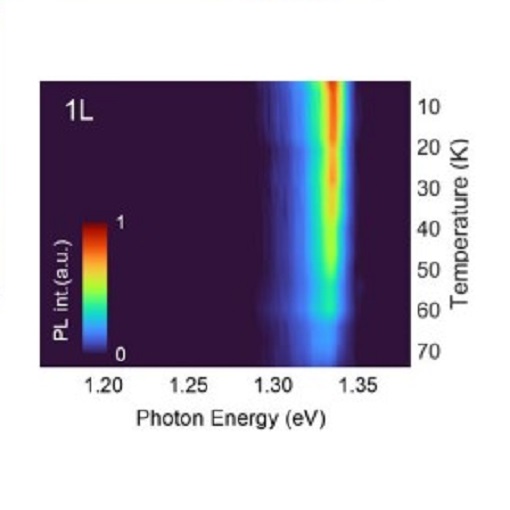
Optically disclosed magnetic ordering
The interest in van der Waals (vdW) magnets is continuously growing. One of suitable playgrounds for exploring the interplay between optical properties and magnetism is the semiconductor metamagnet CrSBr. Researchers led by Eugenio Coronado and Josep Canet-Ferrer (University of Valencia, Spain) conducted photoluminescence measurements and studied the dependence of few-layer CrSBr on temperature, magnetic field and thickness. In particular, they found the connection between the ionization of magnetic donor vacancies and the exciton dynamics around the low temperature magnetic transition. In their study, the group used confocal setup in an attoDRY1000 cryostat as this system allows to apply high magnetic fields at relatively high temperatures. Their findings prove that optical techniques can be very useful in revealing magnetic properties of vdW materials.
This measurement was realized with the attoDRY1000.
Further reading:
F. Marques-Moros et al., ACS Nano 17, 13224 (2023)
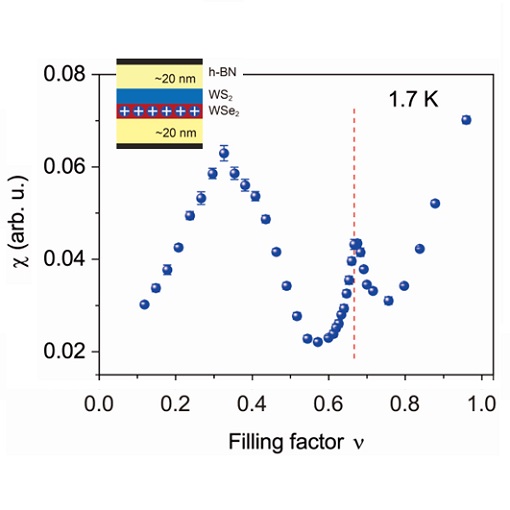
Competing magnetic interactions in moiré materials
The moiré materials provide a unique platform to study the effects of competing magnetic interactions, as electrons in semiconductor moiré materials are less strongly attracted to the moiré lattice sites compared to conventional solids. Here, the group of Kin Fai Mak and Jie Shan (Cornell University, USA) reports the evidence of strongly frustrated magnetic interactions in a Wigner-Mott insulator at 2/3 filling of the moiré lattice in angle-aligned WSe2/WS2 bilayers. Magneto-optical measurements with attoDRY2100 show that the net exchange interaction is antiferromagnetic for filling factors below 1 with a strong suppression at 2/3 filling. The suppression is lifted upon screening of the long-range Coulomb interactions and melting of the Wigner-Mott insulators by a nearby metallic gate electrode. The results can be qualitatively captured by a honeycomb-lattice spin model with an antiferromagnetic nearest-neighbor coupling and a ferromagnetic second-neighbor coupling. This study establishes semiconductor moiré materials as a model system for the lattice-spin physics and frustrated magnetism.
This measurement was realized with the attoDRY2100.
Further reading:
Y. Tang et al., Nature Nanotechnol. 18, 233 (2023)
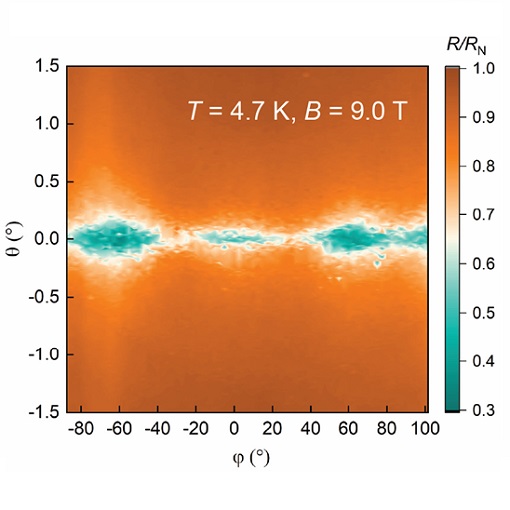
Hunt for the anisotropy in the orbital Fulde–Ferrell–Larkin–Ovchinnikov state
The conventional Fulde-Ferrell-Larkin-Ovchinnikov (FFLO) state characterized by Cooper pairings with finite momentum, is formed by the Zeeman effect of an external magnetic field that breaks the time-reversal symmetry. When the Zeeman effect is suppressed due to the spin-locking in the presence of Ising-type spin-orbit coupling (SOC), the conventional FFLO scenarios are no longer effective. Instead, an unconventional FFLO state is formed by coupling the orbital effect of magnetic fields with SOC, providing an alternative mechanism in superconductors with broken inversion symmetries. The group of J. Ye (University of Groningen, Netherlands) has shown the evidence of such an orbital FFLO state in multilayer Ising superconductor 2H-NbSe2. A characteristic rotational symmetry transition from two- to six-fold is observed across the phase boundary. This study highlights an alternative route to finite-momentum superconductivity and provides a universal mechanism to prepare orbital FFLO states in similar materials with broken inversion symmetries. To resolve the extremely weak anisotropy in the orbital FFLO state, the team developed a method to subtract the effect of canting angle using atto3DR.
This measurement was realized with the atto3DR.
Further reading:
P. Wan et al., Nature 619, 46 (2023)
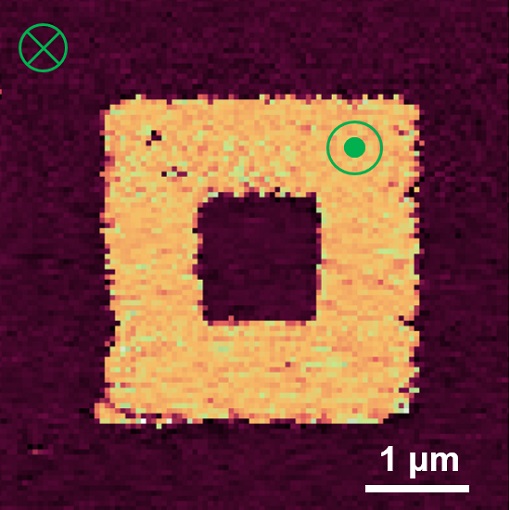
Emergent magnetoelectric phase transition
Complex oxides with a broken symmetry can exhibit various, often emergent, phases. This is in particular facilitated by designing superlattices of complex oxides. The group of Jinxing Zhang (Beijing Normal University, China) has constructed a superlattice by alternately stacking a Ruddlesden–Popper and a perovskite oxide, which resulted in artificially designed ferroelectricity and emergent magnetoelectric (ME) phase transition. The existence of ferroelectric domains below 90 K has been verified by PFM, by using an attoAFM I microscope with a PFM upgrade in an attoDRY1000 cryostat. The accompanying existence of Dzyaloshinskii–Moriya interaction (DMI) and net magnetization have been verified by Brillouin light scattering. Furthermore, external magnetic field suppresses electrical polarization, which confirms the existence of a direct ME effect. This study shows that engineering of interfacial DMI is a promising tool for generating exotic phases and orders in systems with correlated electrons.
This measurement was realized with the attoDRY1000, and the attoAFM I.
Further reading:
X. Liu et al., Nature Commun. 12, 5453 (2021)
Elucidated behavior of a ferroelectric-semiconductor phototransistor
Low-light-level photodetectors (3LPDs) are key ingredients for quantum photonics devices, as well as in astronomy. To be compatible with complementary metal oxide semiconductors (CMOS) technology, they need to operate at low voltages, which is not the case as of now. The team lead by Zhihai Cheng (Renmin University of China, China) and Zhenxing Wang (National Center for Nanoscience and Technology, China) has fabricated and characterized low-light-level ferroelectric-semiconductor phototransistor (FSP) with an intrinsically high gain, featuring photo-induced ferroelectric switching. To unravel the photoresponse mechanism, they carried out in-situ EFM and KPFM on the FSP devices, in which the ferroelectric-semiconductor channels were identified by PFM. These correlative measurements have been realized by an attoAFM I microscope in an attoDRY2100 cryostat, with a KPFM upgrade and a PFM upgrade. This FSP demonstrates potential for novel generation of 3LPDs, due to its low operating voltage, high performance and simple architecture.
This measurement was realized with the attoDRY2100, and the attoAFM I.
Further reading:
J. Yang et al., Adv. Funct. Mater. 2022, 2205468 (2022)
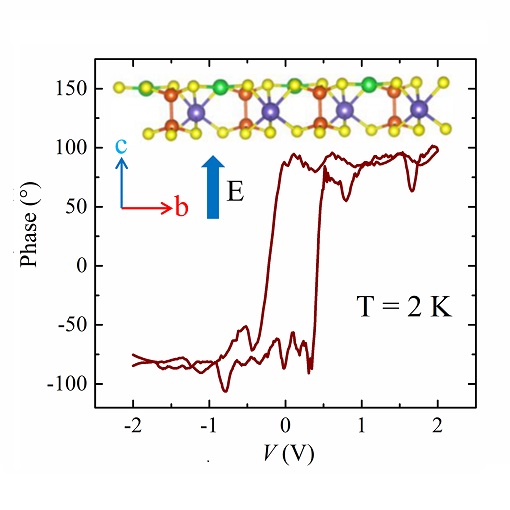
A van der Waals multiferroic
Coexistence of ferromagnetic and ferroelectric ordering in multiferroics makes these materials promising candidates for a next generation of storage devices. Collaboration of several Chinese universities studied a van der Waals (vdW) multiferroic CuCrP2S6 and found therein in-plane electrical and magnetic anisotropies with the same easy axis. Utilizing an attoAFM I microscope with PFM upgrade in an attoDRY2100 cryostat, Zhihai Cheng (Renmin University of China, China) performed piezoresponse force microscopy (PFM) measurements which indicate that the out-of-plane electric dipole originates from the antiferroelectric domain walls. Their findings - which include also the abilty to manipulate the magnons in CuCrP2S6 by electric field, magnetic field and temperature - demonstrate the potential of vdW multiferroics for applications in low-power and high-density non-volatile memories.
This measurement was realized with the attoDRY2100, and the attoAFM I.
Further reading:
X. Wang et al., Nature Commun. 14, 840 (2023)
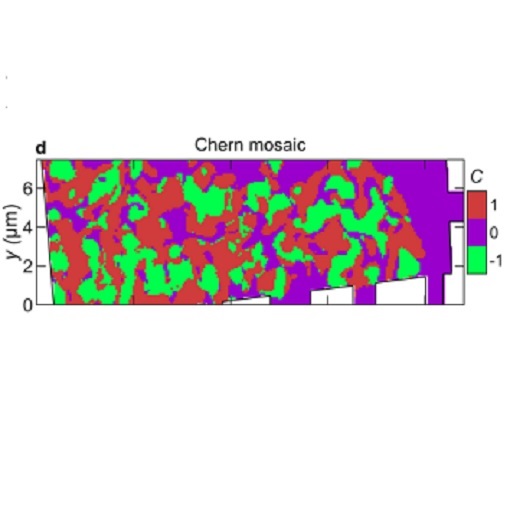
Imaging Chern mosaic and Berry-curvChern Mosaic in magic angle graphene
Graphene is still offering plenty of not yet fully understood phenomena to investigate. Influence on transport and magnetic properties of the itinerant electrons in magic-angle graphene is one of them. The scientists lead by Eli Zeldov (Weizmann Institute, IL) are investigating multiple factors, with their SQUID on a tip, built on attocubes ANP positioners, of which one is Chern mosaic. The measurements show paramagnetic-like patches (green) and diamagnetic-like patches (red), which are not easily explained according to the desire to minimize magnetic energy. Two mechanisms are proposed, which will need more investigation. The first mechanism depends on Hartree-Fock calculations, suggesting the system may break the sublattice symmetry spontaneously near ν = 1, even in the absence of an external sublattice potential.
To know more about the second possible mechanism and other findings you can read the article in Nature Physics:
This measurement was realized with the ANPx101/LT - linear x-nanopositioner.
Further reading:
S. Grover et al., Nature Physics 18, 885 (2022)
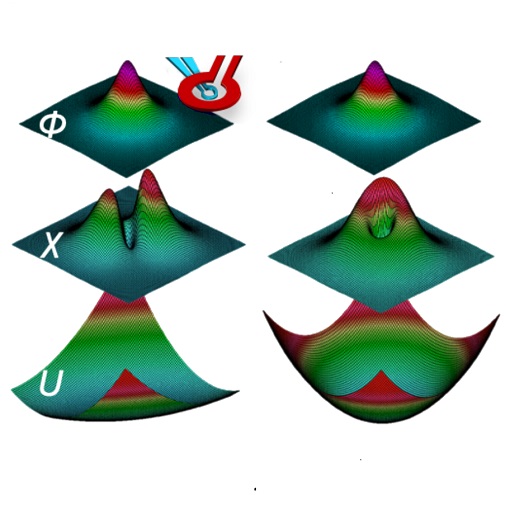
Anomalous vortex dynamics in URu2Si2
Uranium ruthenium silicide (URu2Si2) is an interesting superconductor but despite the attention it has been getting in recent condensed matter science, some of its properties are still quite controversial.
The scientists lead by Kathryn Moler (Stanford University, USA) have been using their sSQUID microscope, based on attocube ANP positioners, for measurements of spontaneous magnetism, rotational symmetry of lattice structures, and superconducting gap structures. The figure schematically shows the values of local flux Φ and local ac susceptibility χ expected for an isolated vortex for anisotropic (left) and isotropic (right) vortex pinning potentials U. These and their other measurements performed on URu2Si2 indicate a nodal gap structure and that chiral superconductivity either is not present or does not lead to detectable spontaneous magnetization.
This measurement was realized with the ANPx101/LT - linear x-nanopositioner.
Further reading:
Y. Iguchi et al., Phys. Rev. B 103, L220503 (2021)
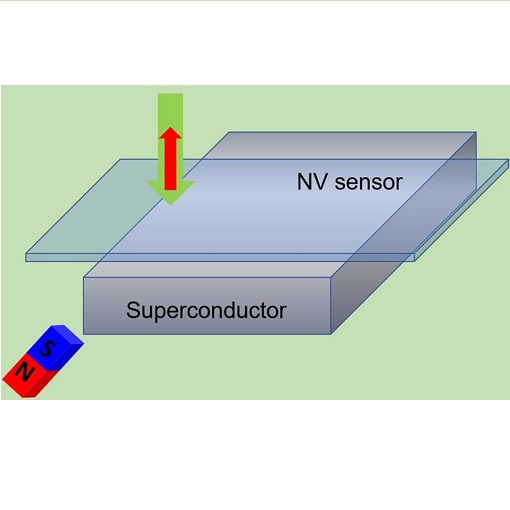
Using quantum sensors to improve magnetic characterization of superconductors
The lower critical magnetic field (HC1) is one of the crucial parameters for characterizing type-II superconductors directly linked to London penetration depth. The conventional way for determining HC1, based on the measurements of bulk magnetization, is unreliable due to insufficient sensitivity and sample shape. The group of Ruslan Prozorov (Ames Lab & Iowa State University, USA) has developed a method for more precise and reliable determination of HC1, and has successfully tested it on cuprates and pnictides.
Utilizing ensembles of NV centers in diamond with an attoAFM/CFM microscope in an attoLIQUID1000 cryostat, they have achieved sub-gauss magnetic field sensitivity and sub-µm spatial resolution. Additional advantage of this method is that it provides all three components of the measured magnetic field. Accurate characterization of superconductors is necessary for designing high-temperature superconductors of desired properties, that could enable more sustainable energy usage in future.
This measurement was realized with the attoAFM/CFM.
Further reading:
K.R. Joshi et al., Phys. Rev. Applied 11, 014035 (2019)
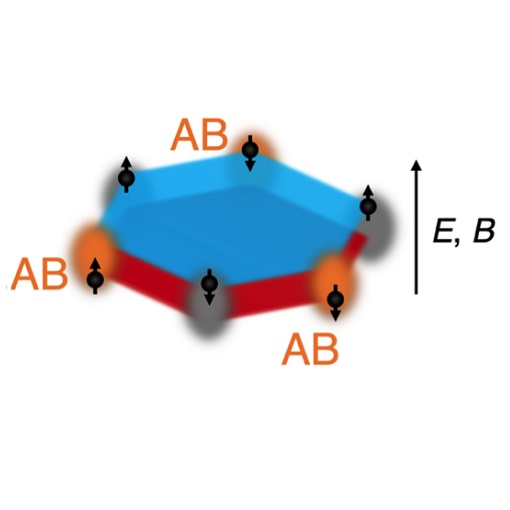
Let's Twist Again into Mott-Hubbard Physics
Layered two-dimensional (2D) materials are powerful playground for both quantum physics and nanotechnology. Lattice mismatch between two layers can create a moiré superlattice, which also affects electronic subsystem and often results in emergent electronic properties. This can also be realized with a homobilayer by a controlled twist of a precise angle.
The group of Kin Fai Mak and Jie Shan (Cornell University, USA) has become world leader in mastering the properties of 2D materials. Recently, they created a well-defined structure where two layers of WSe2 are twisted by an angle of 58°. Both layers are gated, so independent gate voltages can be applied to each layer, thus enabling additional control over the electron location between the two layers. In this way, they have turned the twisted WSe2 bilayer into a Hubbard-model system in the weak interlayer hopping limit. Furthermore, this Hubbard system can be tuned by electric and magnetic field thus rendering 2D moiré materials with flat electronic bands as easily tunable systems for studying strong electronic correlations.
To achieve these results, the team has utilized at best the main features of their attoDRY2100 cryostat, by monitoring the magnetooptical response at variable temperatures all the way down to 1.7 K.
This measurement was realized with the attoDRY2100.
Further reading:
Y. Xu et al., Nat. Nanotechnol. (2022)
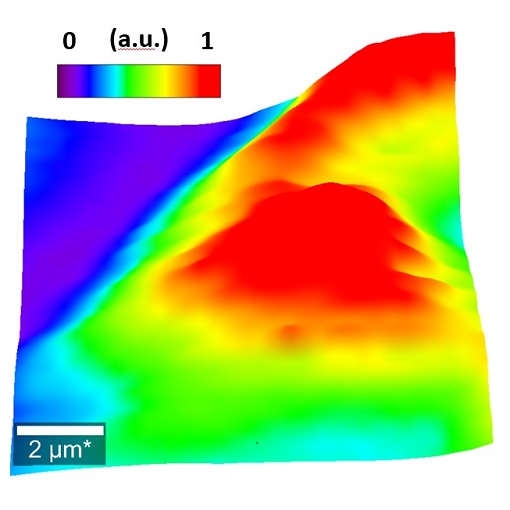
Super-emissive van der Waals heterostructures
Various technologically useful optoelectronic features emerge in van der Waals heterostructures (vdWh) wherein a few-layer hexagonal boron nitride (hBN) is sandwiched between monolayers of a transition-metal dichalcogenide (TMD). The groups of Martin Kalbac (Czech Academy of Sciences, Czech Republic) and Jana Vejpravova (Charles University, Czech Republic) have for the first time observed entangled superradiant excitons in such vdWh. By measuring photoluminescence with attoRAMAN microscope, they demonstrated strong suppression of phonon population at temperatures < 15 K. Excitons then self-assemble into an ordered array in a head-to-tail manner in vdWh, and in turn collectively oscillate and coherently radiate even at extremely low pumping intensity. Super-emissive vdWh are also an excellent playground for studying many-body correlations.
This measurement was realized with the attoRAMAN.
Further reading:
G. Haider et al., Adv. Funct. Mater. 2021, 2102196 (2021)
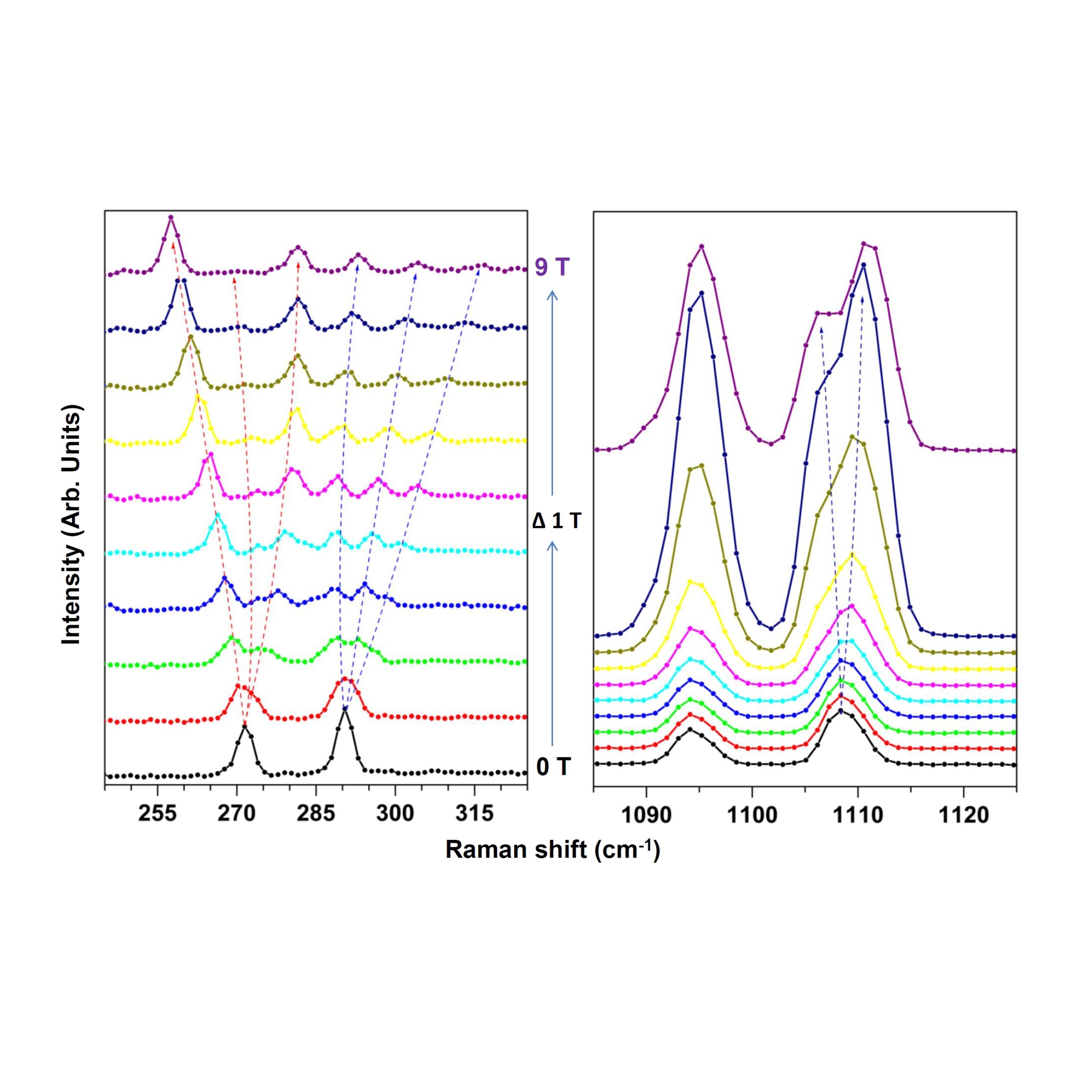
Magnetic Modes in Rare Earth Perovskites: A Magnetic-Field-Dependent Inelastic Light Scattering study
Intrinsically inert rare earth perovskites, like LaAlO3, can be turned into optically and magnetically active materials by introducing certain cations or vacancies. The groups of Thirumalai Venkatesan (National University of Singapore, Singapore), Surajit Saha (Indian Institute of Science Education and Research, India), and Ting Yu (Nanyang Technological University, Singapore) performed a cryogenic magneto-Raman study on several rare-earth perovskites free of magnetic impurities. The measurements revealed the presence of defect-states with magnetic degrees of freedom in the bandgap. Their results, which have been obtained with attoRAMAN microscope and attoLIQUID2000 cryostat, exhibit how appropriate defect engineering can induce orbital magnetization that can render rare earth perovskites useful for novel magnetic and magneto-optic applications.
This measurement was realized with the attoRAMAN.
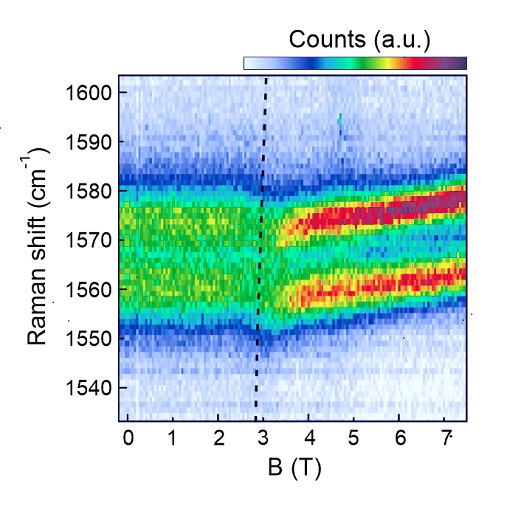
Manipulating phonons
Phonons govern various thermal, optical and electronic properties of materials. Potential phononic applications require the possibility of manipulating phonon modes. Yet, due to their spinlessness and large nuclear inertia, phonons are difficult to manipulate by electromagnetic fields. Exception thereto are systems with strong electron-phonon interaction, where manipulation of phonons is achieved indirectly by manipulating the electrons. Graphene makes a perfect system for studying the manipulation of phonons, as it possesses unique electron-phonon coupling mechanisms and the ability for excellent external control over its electrons. Utilizing an attoRAMAN microscope in an attoLIQUID2000 cryostat, the group of Christoph Stampfer (RWTH Aachen University, Germany & Forschungszentrum Jülich, Germany) explored the tunability of the phonon polarization in suspended uniaxially strained graphene by magneto-phonon resonances. By electrostatic doping they can selectively couple the phonons to right- or left-handed polarized Landau level transitions, which in turn also fixes the circular polarization of the phonon modes. They have achieved an unprecedented electrostatic control over the angular momentum of phonons: circular phonon polarization of up to 40% has been reached exclusively by electrostatic fields, and the polarization handedness can be reversed by changing the dopants from electrons to holes. Such remarkable findings pave the way towards phononic applications.
This measurement was realized with the attoRAMAN.
Further reading:
J. Sonntag et al., Nano Lett. 21, 2898 (2021)
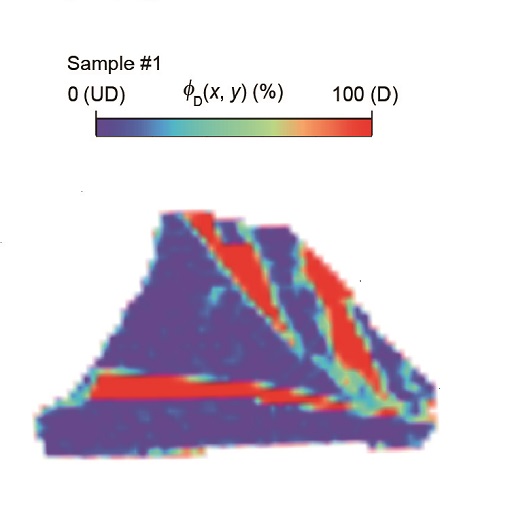
Macroscopic manifestation of microscopic complexity
For many-body systems in thermodynamic limit, phase evolution that occurs at the microscopic level - and that is highly complex - does not influence the macroscopic phase evolution, hence no significant uncertainties can be associated with measurements of macroscopic physical quantities. Yet, for small enough systems that are below thermodynamic limit, complex behavior at the microscopic level may manifest itself macroscopically as emergent behavior. The group of Fumitaka Kagawa and Yoshinori Tokura (University of Tokyo, Japan & RIKEN Center for Emergent Matter Science, Japan) studied complexity of the phase evolution of transition-metal dichalcogenide IrTe2 flakes, via real-space imaging by cryogenic scanning Raman microscopy. In their experiments they used an attoRAMAN microscope. Their findings highlight emergent superconductivity, and exemplify the difference of phase evolution in bulk and flakes samples of IrTe2. This class of studies is also relevant for applications, as sample fabrication techniques of nowadays allow for the phase control of materials in solid-state nanodevices.
This measurement was realized with the attoRAMAN.
Further reading:
H. Oike et al., Phys. Rev. Lett. 127, 145701 (2021)
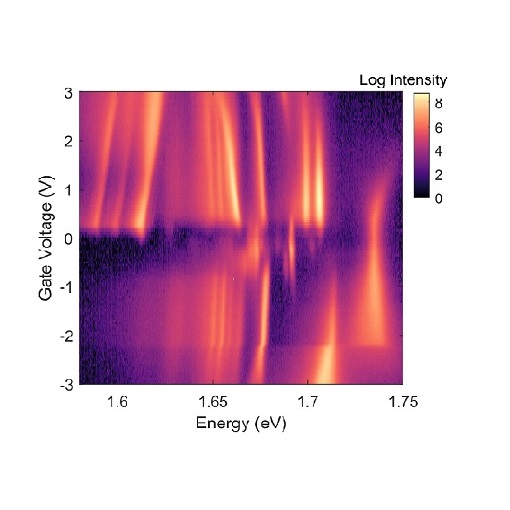
Excitons in TMD for valleytronics
Semiconducting single-layer transition metal dichalcogenides (TMDs) have proven to be well suited for studying interplay between charge, spin and lattice, which is of interest for both fundamental physics and development of future applications. The broken inversion symmetry in TMDs and strong spin-orbit coupling lead to the spin-valley coupling of band edge electrons. In turn, a collaboration led by Xiaodong Xu (University of Washington, USA) has observed a new series of low-energy excitons, strongly coupled to phonons, in the photoluminescence (PL) spectrum of ultraclean single-layer WSe2, using an attoCFM I microscope in an attoDRY2100 cryostat. Their findings open a gate towards exploring collective phenomena in quantum optics using intrinsic donor-bound excitons in 2D materials and towards designing optical spin quantum memory.
This measurement was realized with the attoCFM I, and the attoDRY2100.
Further reading:
P. Rivera et al., Nature Commun. 12, 871 (2021)
Harnessing the emergent potential of CrI3 flakes
For materials scientists it is not only essential to understand the properties of materials, but also to be subsequently able to design materials with desired properties that will in turn be implemented in devices. Van der Waals materials (vdWMs) have proven to be particularly rewarding when it comes to designing desired properties. Yet, among vdWMs there is a scarcity of magnetic materials, which would potentially be technologically useful for e.g. data storage or sensorics. CrI3 is one of the rare vdWMs that exhibits intrinsic magnetism. Even though this occurs only at low temperatures and the material is air-sensitive, CrI3 has become a notable playground for investigating and developing useful properties in vdWMs in recent years.
The group of Jie Shan and Kin Fai Mak (Cornell University, USA) have extensively studied magnetic ordering in CrI3 flakes, in a very application-oriented fashion. They have shown that interlayer antiferromagnetic coupling in CrI3 can be tuned up by almost 100% with pressure, before the transition to ferromagnetism occurs [1].
Moreover, in bilayer CrI3 they have demonstrated tunability of antiferromagnetic resonances in the range of tens of GHz by means of electrostatic gating, which indicates potential for ultrafast data storage and processing [2].
Furthermore, the basis has been laid for potential applications in magnetic actuation and sensing. The group has demonstrated magnetostriction in bilayer antiferromagnetic CrI3: in mechanical resonators made from CrI3 flakes, the resonant frequency depends on the magnetic state of the material [3].
Utilizing the property of controlling the interlayer magnetic order in CrI3 by electric field, the group has designed and tested a spin transistor based on CrI3 flakes. As magnetization configurations in this device are not controlled by spin current, but rather by gate voltage, the spin transistor can achieve a conductance ratio of ~400%, which is suitable for non-volatile memory applications [4].
Their results have been obtained with help of attoDRY1000 & attoDRY2100 cryostats, which have been used in conjunction with various experimental techniques like Raman spectroscopy, magnetic circular dichroism, magneto-optical Kerr effect, and tunnel magnetoresistance measurements.
This measurement was realized with the attoDRY1000, and the attoDRY2100.
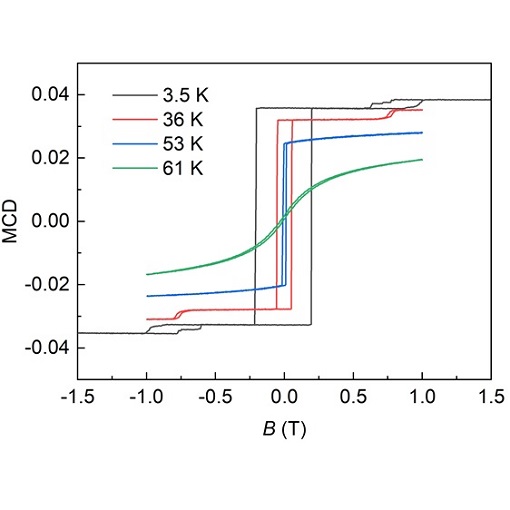
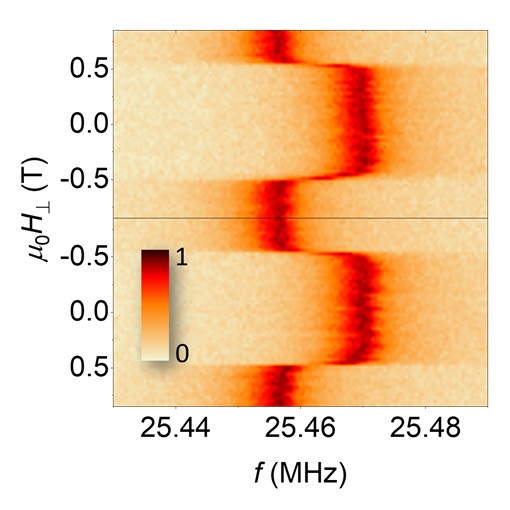
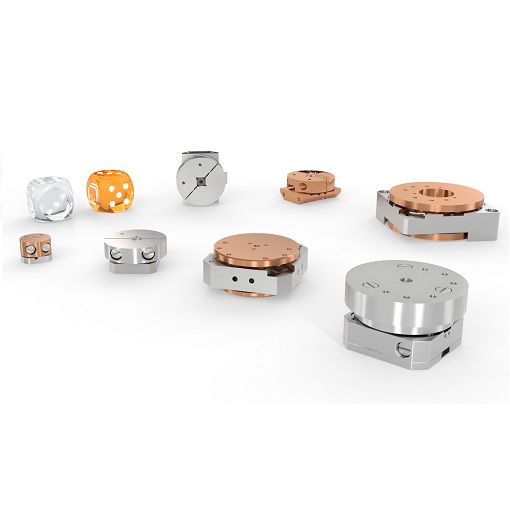
Adding twists and turns to Magneto-Transport Measurements
A constantly increasing number of scientific experiments and their foreseeable applications require the characterization of materials in terms of three-dimensional magneto-transport properties. In order to explore the cutting-edge limits of those features, one requires not only a wide sample temperature range, from room temperature to down to few mK, but also a powerful vector magnetic field. However, typical vector magnets are limited to in field strength: at least two directions over three cannot exceed one or two Tesla.
The renowned attocube expertise with nanopositioners has created an elegant solution to overcome this limit, by equipping the transport insert with a broad portfolio of sample rotators, which are able to perform also in ultra-high vacuum and variable/low temperature conditions. The offer is not simply limited to single rotators: attocube provides also a eucentric double sample rotator - the atto3DR - and, moreover, we also provide a complete measurement system - the attoTMS. The system includes the atto3DR, the automated attoDRY2100 cryostat and an all-in-one acquisition electronics Nanonis Tramea, with one dedicated software to rule them all.
Find out more about the benefits of rotating your sample with the help of attocube products.
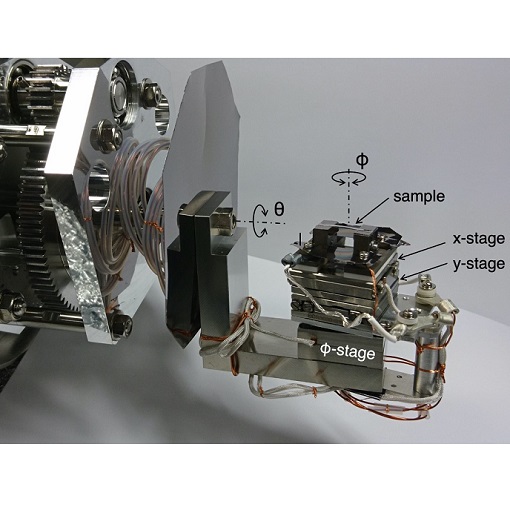
3D micro-structure sample positioning in 4 dimensions in a µ-RHEED/SEM system
Sohei Nakatsuka et. al from Tohoku University and Osaka University, Japan have designed a system for analysing a 3D micro-shaped structure on a Si substrate. Their system combines a micro-beam reflection high-energy electron diffraction (µ-RHEED) and scanning electron microscopy (SEM). Sample Manipulation is done in four dimensions via a mechanical rotation stage for glancing angle (Θ) and a 3D nanopositioner stack mounted onto the mechanical device. The 3D stack consists of two attocube ECSx3030 for xy-movement and one ECR3030 for azimuth angle (Φ) rotation. The sample manipulator enables precise positioning and rotation of the 3D microstructured sample to identify surface structures like surface morphology, surface orientation defined by Miller index, surface ordering, and surface reconstructed structures. attocube EC* series stages are the perfect fit due to highest precision within extrem environments like ultra-high vacuum and harsh radiation.
This measurement was realized with the ECSx3030/StSt/NUM+/HV.
Further reading:
e-J. Surf. Sci. Nanotechnol. 19, 13-19 (2021)
Revealing physical origin of electronic phase separation in complex oxides
Manganites exhibit various nonlinear responses to external stimuli, which makes them potentially useful materials for electronic devices. While nonlinear responses in complex oxides have been correlated to large-scale electronic phase separation (EPS), the physical origin of EPS has for a long time remained puzzling. The group of Jian Shen (Fudan University, China) has provided the first experimental evidence that the disorder induced by chemical doping is a prerequisite for EPS, thus verifying the theoretical predicition.
This result has been directly obtained by comparative MFM measuerments on chemically ordered manganite film vs. the chemically disordered one, utilizing an attoAFM I with attoMFM upgrade in an attoDRY1000 cryostat. Their finding opens the path to focused design of complex oxides with desired properties for applications, especially those exhibiting colossal magnetoresistance.
This measurement was realized with the attoDRY1000, and the attoAFM I.
Further reading:
T. Miao et al., PNAS 117, 7090 (2020)
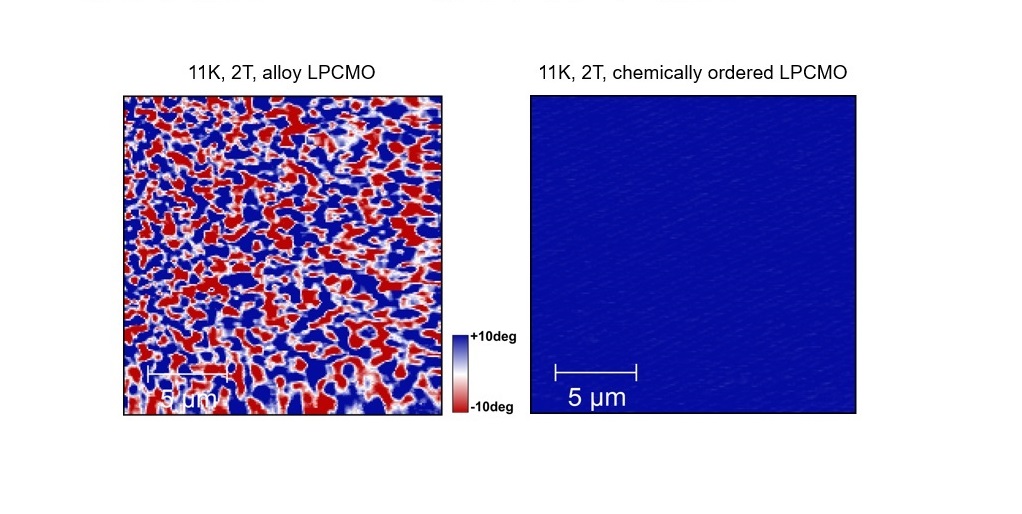
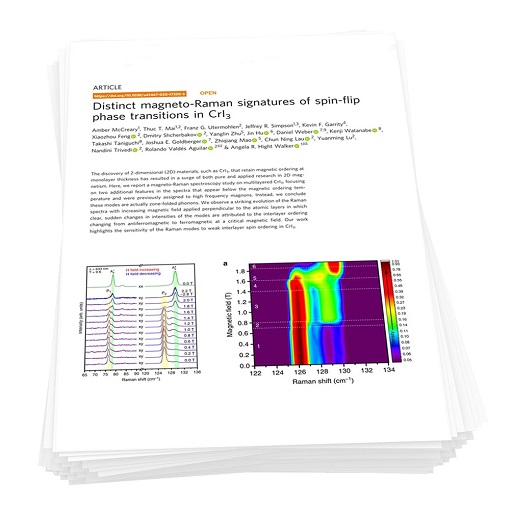
Spin-Flip Phase Transitions in Multi-Layered CrI3
Newly discovered magnetic 2D materials, such as CrI3, are among the most interesting materials in nowadays research. While ferromagnetic in bulk, thin multilayers of CrI3 can be switched between ferro- and antiferromagnetic layer stacking with electric & magnetic fields, or by applied pressure. Using an unique magneto-Raman measurement capability based on attoDRY1000 and LT-APO objective, the group of Angela Hight Walker (NIST, USA) identified the transition between the antiferromagnetic and ferromagnetic phases as a function of magnetic field and temperature by tracking the lattice vibrations (phonon modes) of CrI3. Their findings highlight the sensitivity of Raman modes to magnetic order and spin flips of single layers. The study establishes magneto-Raman spectroscopy as a valuable tool to investigate magnetic phase transitions in 2D van der Waals magnets.
This measurement was realized with the attoDRY1000.
Further reading:
A. McCreary et al., Nature Commun. 11, 3879 (2020)
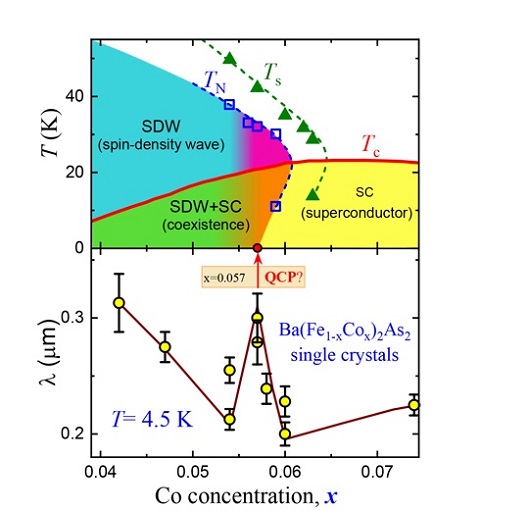
Probing Quantum Phase Transition inside Superconducting Dome
Unconventional superconductors (UCS) stand in permanent focus of physicists hoping to harness high-temperature superconductivity, and thus paving the path towards more affordable and sustainable energy usage in future. Elucidating the interplay between antiferromagnetic quantum phase transition (QPT) and superconducting state is crucial for understanding the UCS.
Experimentally this interplay is usually probed from the normal-state side. The group of Ruslan Prozorov (Ames Lab, USA) probed it from the superconducting side via measurements of the London penetration depth λ in a class of iron-pnictides by performing NV magnetometry with an attoAFM/CFM in an attoLIQUID1000 cryostat. Their results reveal a peak in λ coinciding with QPT, which unexpectedly speaks in favor of an universal QPT in iron-pnictides, irrespective of the disorder level.
This measurement was realized with the attoAFM/CFM.
Further reading:
K.R. Joshi et al., New J. Phys. 22, 053037 (2020)
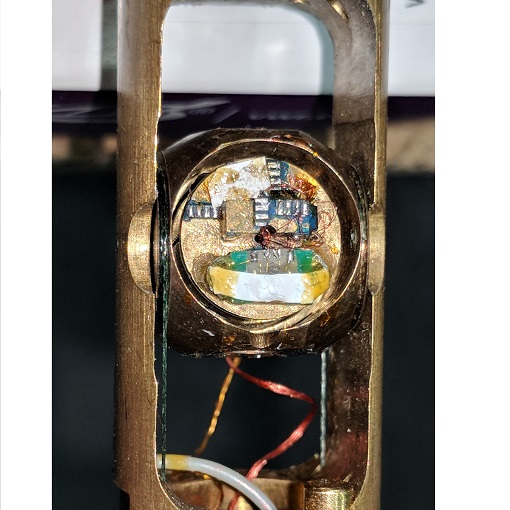
ANR31 Rotator used at 350 mK & 35 T
High precision in extreme conditions was a major requirement for a collaboration led by Nicholas Butch at the NIST and the University of Maryland (USA). While working at magnetic fields up to 65 T, they observed an exotic “re-entrance” effect of superconductivity in UTe2. As superconductivity and magnetic fields are usually not coexistent, their findings highlight a new kind of explanation for superconductivity.
For the magnetoresistance measurements of up to 35 T in Tallahassee, an ANR31 rotator aligned the sample’s axis precisely with respect to the applied DC field. As the superconductive phase is stable only over a narrow angular range at high fields, precision was a major prerequisite.
This measurement was realized with the ANR31/LT/HV rotator made from Titanium and CuBe.
Extremely narrow magnetic domain walls in U ferromagnets
The ferromagnetic UCoGa - from the family of UTX compounds - features a strongly anisotropic uniaxial magnetization with the magnetic domains being pinned to the lattice defects during the transition phase. Using attoAFM, the group of Jan Prokleska at the Charles University (Prague, CZ) showed in direct low-temperature investigations the magnetization and demagnetization procedure of UCoGa with increasing/decreasing applied magnetic field. Further analysis of the measurements supports the idea that the very narrow domain walls are formed by the pairs of the nearest U neighbor ions with antiparallel magnetic moments within the basal plane.
This measurement was realized with the attoAFM I.
Further reading:
P. Opletal et al.,Materialstoday 24, 101017 (2020)
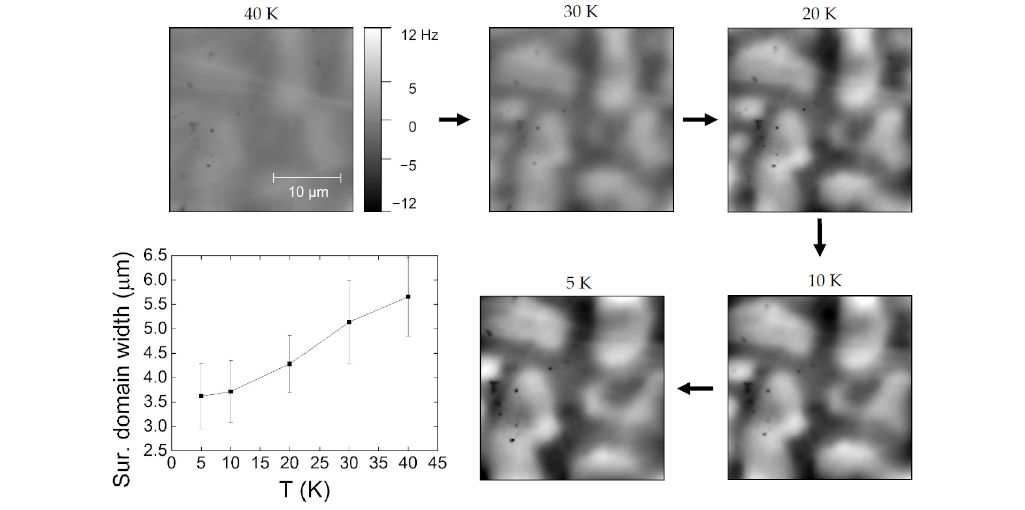
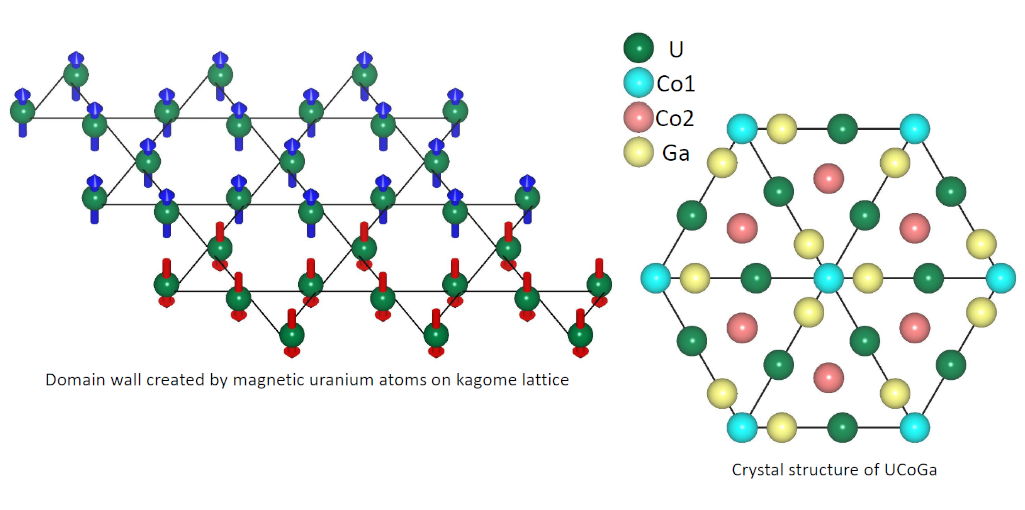
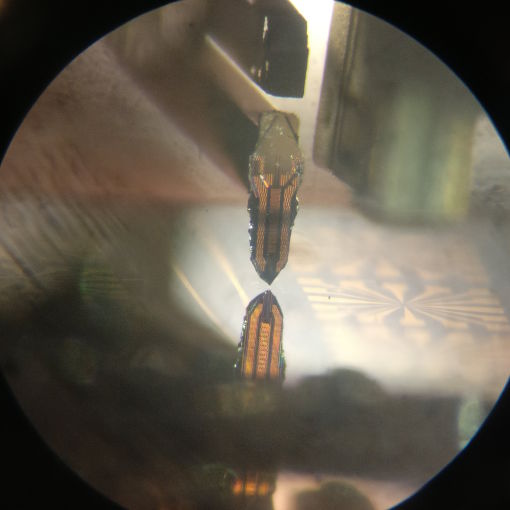
Near-Field Scanning Microwave Microscope at 30mK
Scanning techniques such as atomic force microscopy (AFM) or scanning tunnelling microscopy (STM) offer a wide range of material investigation possibilities. Depending on the environmental conditions and the required scanning resolution scanning probe microscopes are hard to design and setup and not seldom homemade devices, adapted to their special proposes and requirements. A new low temperature near-field scanning microwave microscope working at 30 mK, designed to meet emerging needs of the quantum technologies sector, was now developed by the group of Sebastian de Graaf at NPL (National Physical Laboratory, Teddington, UK) in collaboration with the group of Prof. Sergey Kubatkin (Chalmers University of Technology, SE). It combines microwave characterization up to 6 GHz with STM or AFM techniques. The environment of a dilution cryostat makes special demands on the stability and stiffness of the used components. The group used a set of ANPx100 and ANPz100 nanopositioners (former versions of the ANP101 positioners) to align the sample with the tip in x, y, and z direction and a small ANPz51 positioner for the RF waveguide positioning. First verifications of the instrument showed the capability to image dielectric contrast down to the single microwave photon regime.
This measurement was realized with the ANPx101/LT/HV - linear x-nanopositioner, the ANPz101/LT/HV - linear z-nanopositioner, and the ANPz51/LT/HV - linear z-nanopositioner.
Further reading:
S. Geaney et al; Scientific Report 9, 12539 (2019)
Isolating Hydrogen Gas inside H-BN Bubbles
Storing small amounts of gas even on the atomic scale is extremely interesting for a lot of research fields. The choice of the barrier material plays an important role: It has to form bubbles to surround the stored gas, it has to be stable under extreme conditions, and it shall not interfere with the enclosed gas on chemical or physical terms. The group of Haomin Wang at the Chinese Academy of Sciences (Shanghai, CN) now presents new results on the production of isolated hydrogen inside hexagonal boron nitride (h-BN) bubbles via plasma treatment.
Low temperature atomic force measurements were carried out to prove that the surrounded gas is indeed hydrogen. Therefore, the authors used a cryogenic atomic force microscope, the attoAFM I, cooled by the closed cycle cryostat attoDRY1100, the 4 K version of the attoDRY2100. Setting exactly the measurement temperature and performing temperature sweeps gave the researches the possibility to show the bubble’s disappearance at a temperature of 33.2 K ± 3.9 K indicating a transition or disappearing of the enclosed gas. As this temperature is close to condensing temperature of H2 (33.18 K), the results point to the presence of atomic hydrogen inside the h-BN bubbles. The successful production of hydrogen inside the bubbles and presented results are a next step for hydrogen storage.
This measurement was realized with the attoDRY2100, and the attoAFM I.
Further reading:
Li He, et al; Nature Communications 10, 2815 (2019)
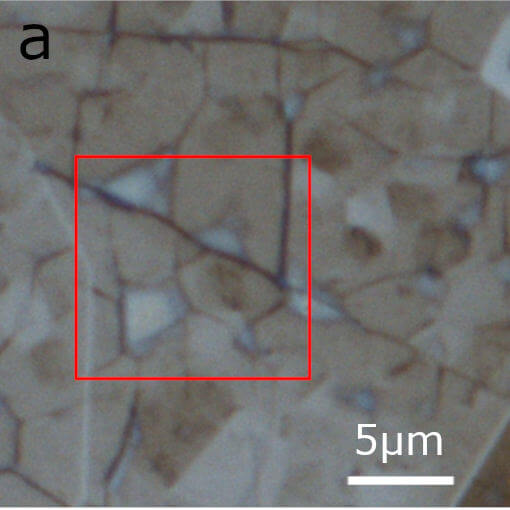
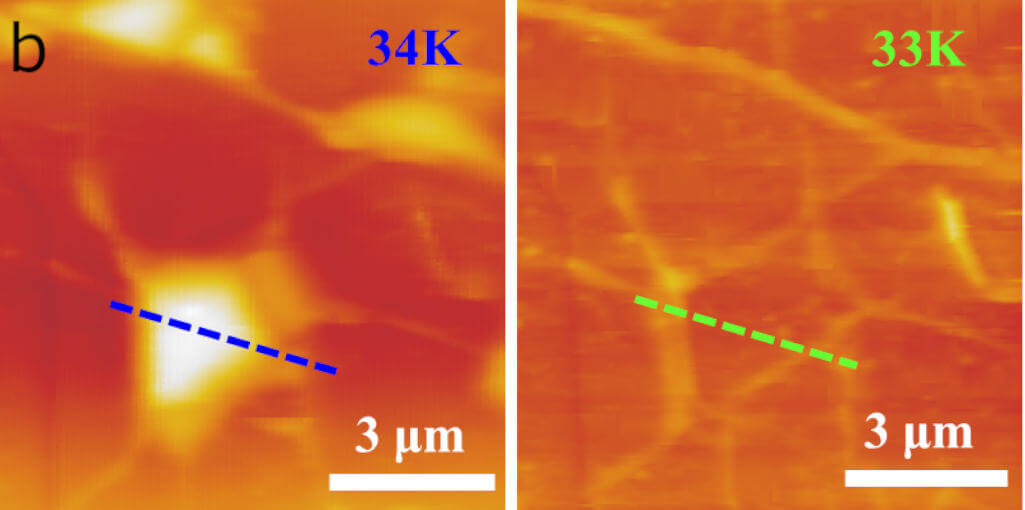
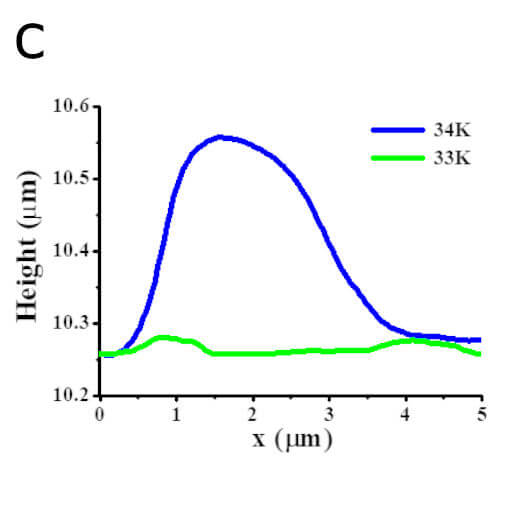
In-situ electrical biasing technique in MoS2
Due to their strong spin-orbit coupling and resulting large spin-orbit splitting in the valence band, layered transition metal dichalcogenides (TMD) are promising materials among the family of 2D materials for spintronic applications. The groups of Nathaniel Stern and Vinayak Dravid at Northwestern University (Evanston, Illinois, USA) used a film of monolayer MoS2 to present a new in-situ electrical biasing technique with transmission electron microscopy. They found that with an applied electric field a net vacancy flux towards the grain boundaries occurs. This vacancy flow results in a regions of Mo-rich nanoparticles aggregating near the voids (see figure c) which appear at strained regions around the grain boundaries (blue colored in figure (b)). The vacancy flow process saturates after several initial biasing cycles when the material reaches a stable state. To characterize these samples, they used the closed cycle cryostat attoDRY2100 combined with the attoCFM I and optical head to study structural dynamics by Raman spectroscopy.
This measurement was realized with the attoCFM I, and the attoDRY2100.
Further reading:
A.A. Murthy et al., ACS Nano 14, 2, 1569-1576 (2020)

Charge Carrier Mobility in Perovskite thin films
One of today’s main challenges is a pollution-free resource of energy which allows us to limit global climate change. A promising way is the use of solar energy with the optimal photo absorber material. In a joint project, the groups of Achim Hartschuh at the Ludwig Maximilians University (Munich, D) and Pablo Docampo at Newcastle University (Newcastle upon Tyne, UK) presented an optical study about charge carrier transport in a thin film of methylammonium lead iodide - a material which is prototypical for the new class of hybrid perovskites, reaching a solar cell efficiency of more than 22%. Temperature-dependent photoluminescence measurements were performed with the table-integrated closed-cycle cryostat attoDRY800 which allowed for flexible integration of the microscope setup and reliable low-temperature operation.
Photoluminescence measurements indicated a steady decrease of the charge carrier diffusion constant with increasing temperature, see figure. Depending on the structure of the material - tetragonal or orthorhombic crystal phase - the mobility follows a power law dependence as Tm with m = -1.8 +/- 0.1 (tetragonal) or m = -1.2 +/- 0.1 (orthorhombic). The dynamics of the excited charge carriers is in agreement with theoretical models based on a temperature-dependent diffusion constant and several decay channels. Their study opens up the possibility to investigate other material compositions in the same way in the future.
This measurement was realized with the attoDRY800.
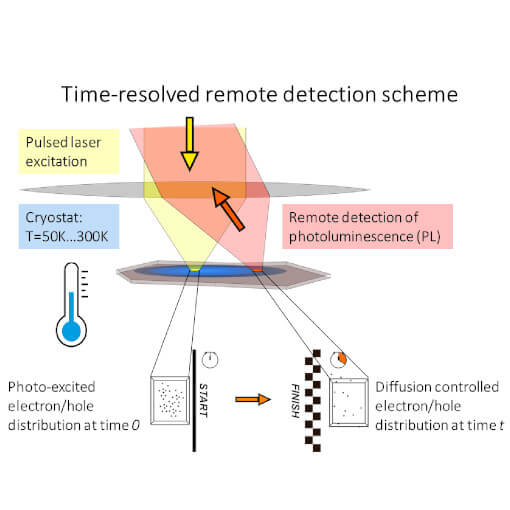

Scanning single-spin magnetometry of a van der Waals magnet
Van der Waals materials (vdWM) attract a lot of attention in the last years, because they have proven to be rewarding when it comes to designing desired properties. Yet, among vdWM there is a scarcity of magnetic materials, which would potentially be technologically useful for e.g. data storage or sensorics. Chromium-triiodide (CrI3) is one of the rare vdWM that exhibits intrinsic magnetism.
The Quantum Sensing Group of Patrick Maletinsky at the University of Basel (Switzerland) made a breakthrough in understanding its properties: using scanning nitrogen-vacancy magnetometry (NVM) they determined magnetization in CrI3 monolayer to be ≈ 16 µB/nm2.
Furthermore, they measured comparable magnetization values in multilayers with odd number of layers, and no magnetization in multilayers with even number of layers, which has been attributed to antiferromagnetic coupling of individually ferromagnetic layers. Their results have been achieved by the help of an attoAFM/CFM microscope in an attoLIQUID1000 cryostat. Quantitative study of van der Waals magnets is a prerequisite for exploring application potential of this novel class of nanomagnets, and NVM renders an excellent tool for it.
This measurement was realized with the attoAFM/CFM.
Further reading:
L. Thiel et al., Science 364, 973 (2019)
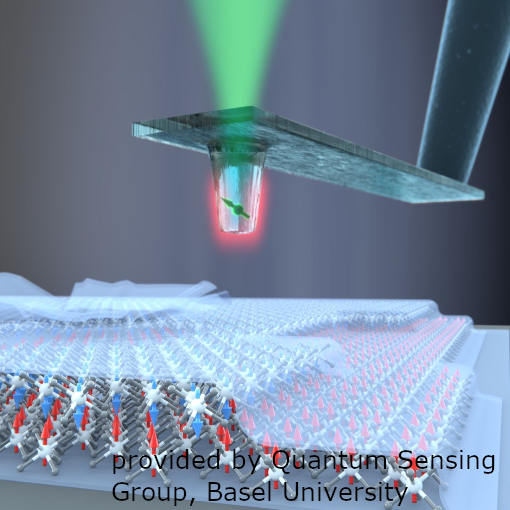
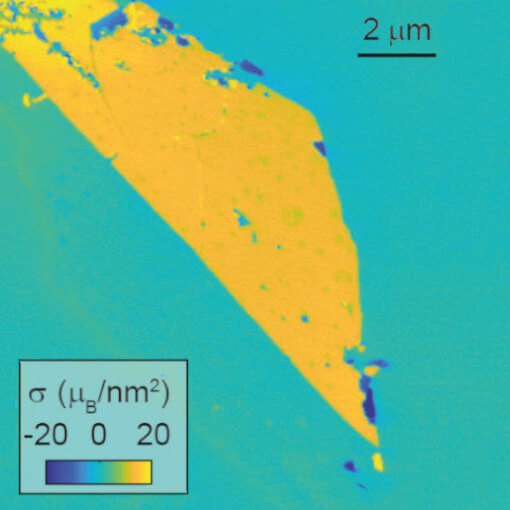
Uncompensated Bound Charges at Improper Ferroelectric Domain Walls
The research focus of an international team led by researchers from NTNU Trondheim, ETH Zurich, and Institut Néel, CNRS, lies on domain walls in improper ferroelectrics, a promising type of functional interface for nanoscale electronics. The team demonstrated the stability of improper ferroelectric domain walls in hexagonal manganites against electrically uncompensated bound charges.
Using the attoAFM I, the authors investigated the electronic domain-wall transport, carrier distribution, and electrostatics at temperatures down to 4.2 K. attocube's atomic force microscope, the attoAFM I, enables atomic force microscopy at cryogenic temperatures, down to mK. The findings provide new insight into the fundamental domain-wall properties, bringing us yet another step closer towards next-generation's durable and ultra-small electronic components.
This measurement was realized with the attoAFM I.
Further reading:
Peggy Schoenherr, et al.; Nano Lett.19, 3, 1659-1664 (2019)
Fine-scale Stripey Morphology of an Iron Pnictide - New Findings in Material Science
Iron-based superconducting pnictides feature relatively high transition temperature and a co-existence of the superconducting state with antiferromagnetic ordering. This remarkable combination brings these materials into the focus of research. The group of Prof. Susannah Speller at the Materials Department of the University of Oxford (Oxford, UK) used an attoAFM I cooled by a closed cycle attoDRY1000 for magnetic force measurements at about 4.6 K to investigate the local electronic structure and chemistry of RbxFe2-ySe2 crystals.
The group showed a fine-scale stripey morphology of the superconducting phase which - combined with previous findings - paves the way to understand the intriguing electronic and magnetic properties of these compounds.
This measurement was realized with the attoDRY1000, and the attoAFM I.
Further reading:
P Dudin et al.; Supercond. Sci. Technol. 32, 044005 (2019)
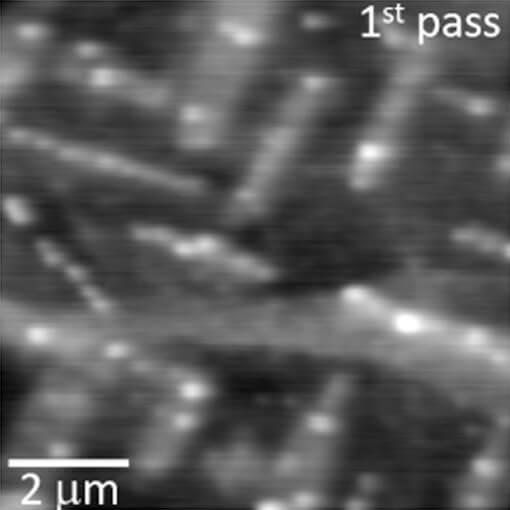
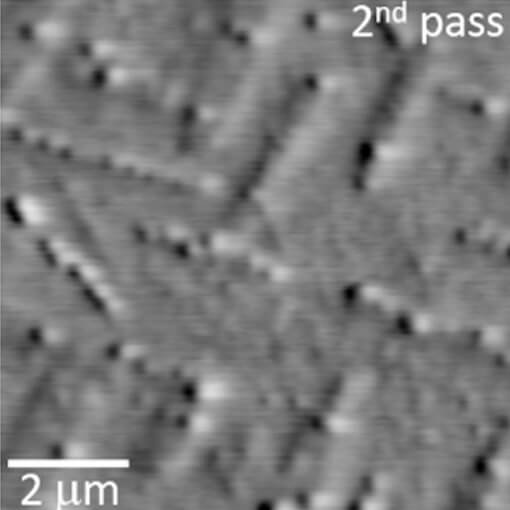
A nanoscale quantum sensor at high pressures
Pressure affects phenomena ranging from the properties of planetary interiors to transitions between quantum mechanical phases. However, the enormous stress gradients generated in high pressure experimental apparatuses, such as the diamond anvil cell, limit the utility of most conventional spectroscopy techniques. To address this challenge, a novel nanoscale sensing platform was independently developed by three groups (given in alphabetic order): the Jean-Francois Roch group (Université Paris-Sud, FR), the Sen Yang group (Chinese University of Hong Kong, CN), and the Norman Yao group (University of California, Berkeley, USA). The researchers used quantum spin defects integrated into an anvil cell to detect minuscule signals under extreme pressures and temperatures with diffraction-limited spatial resolution.
For this purpose, Norman Yao and colleagues utilized the table-integrated closed cycle attoDRY800 cryostat - the ideal platform for precise and rapid temperature control of a diamond anvil cell while offering a large sample chamber and free-beam optical access. The convenience of the closed-cycle cryostat allowed the researchers to publish their results to arXiv just nine months after installation.
This measurement was realized with the attoDRY800.
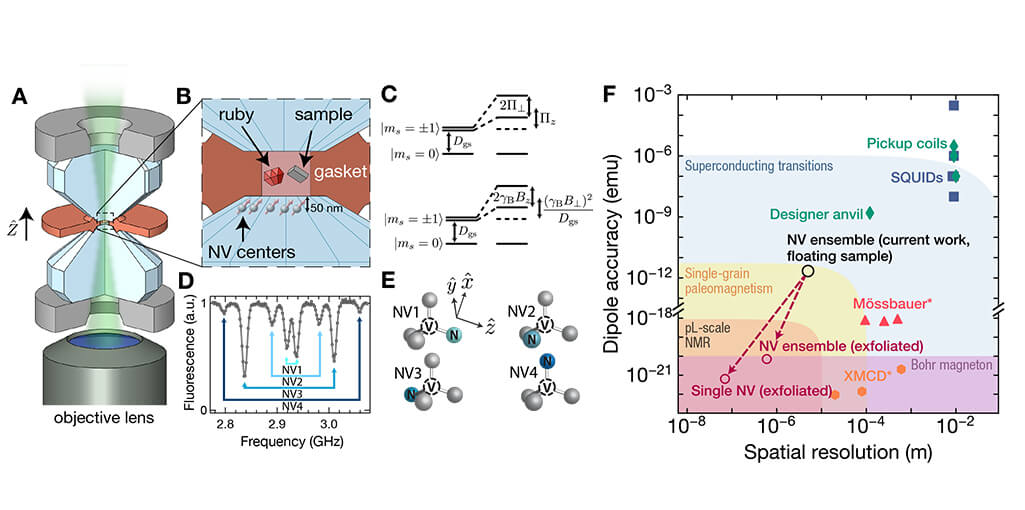
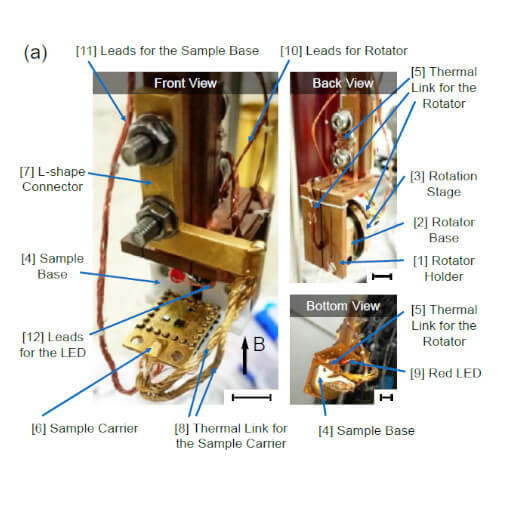
Rotating transport measurement setup at 25mK
When designing a setup for mK applications material choice and thermalization is crucial. Titanium becomes superconducting at temperatures below 400 mK consequently, the thermal contact to the sample is not ensure anymore. At Peking University (Beijing, China), Dr. Pengjie Wang from Xi Lin group has chosen the beryllium-copper version of the ANR101 positioner with resistive readout to realize their low-electron-temperature sample rotation system for transport measurements inside a dilution cryostat. The rotator allows to orient the sample in-situ with respect to a high magnetic field of up to 10 T.
The dilution cryostat with a diameter of 81 mm offers the required space for the rotator setup, see picture. The sample holder is designed for the use of up to four sample, each 5 mm x 5 mm large, a red LED is installed to illuminate the samples at 4 K for an easier orientation. The measured electron temperature in the setup is 25 mK, the same as the environmental temperature.The setup is designed for transport measurements and material characterization at ultra-low electron temperatures. A first application shows the tilt-induced localization and delocalization of the second Landau level of the two-dimensional electron gas - an experiment for which a pressurized liquid ³He cell had been necessary elsewise.
(Figure reproduced from Rev. Sci. Instrum. 90, 023905 (2019); doi: 10.1063/1.5083994, with the permission of AIP Publishing)
This measurement was realized with the ANR101/RES/LT - rotator (360° endless).
Cryogenic Infrared Nanoscopy of Conducting Oxide Interfaces
Scattering scanning near-field optical microscopy (s-SNOM) analyses complex optical and electrical properties of a sample on the nanoscale by scanning it with an illuminated sharp tip and detecting the backscattered light. neaspec and attocube improved this technique to enter the cryogenic regime, which offers completely new ways to study material properties and exploit new phase regimes.
In a first project the group of Alexey Kuzmenko from the University of Geneva (Geneva, CH) used the cryogenic s-SNOM system - the cryo-neaSNOM - to study the nearfield response of LaAlO3/SrTiO3 heterostructures in the range of wavelengths from 9.3 to 10.7 μm from room temperature to 6 K.
Using an AFM-writing technique, the team managed to image conducting wires written in an insulating interface with a conducting AFM, see figure 1. With the near-field optical measurements they showed a signal dependence on the transport properties of the electron system which is present in the interface (figure 2). A theoretical model based on the plasmon-phonon coupling as a central player explains the measured results quantitatively and predicts the correct frequency, temperature and gate-voltage dependence of the near-field amplitude and the phase. This result clearly shows the ability of s-SNOM to analyze buried conducting layers - an important feature for the future oxide electronics.
This measurement was realized with the cryo-neaSCOPE+xs.
Further reading:
Weiwie Luo, et al; Nature Communications 10, 2774 (2019)
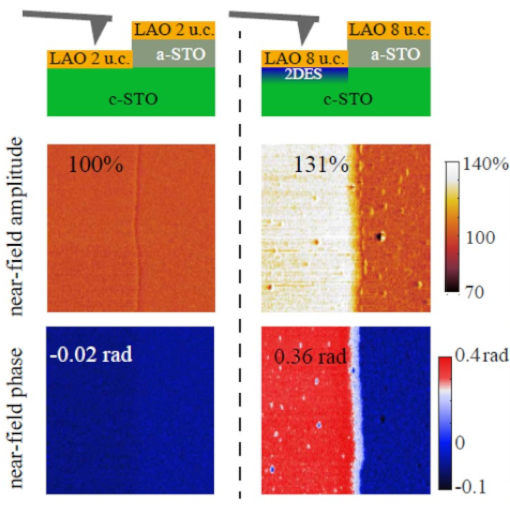
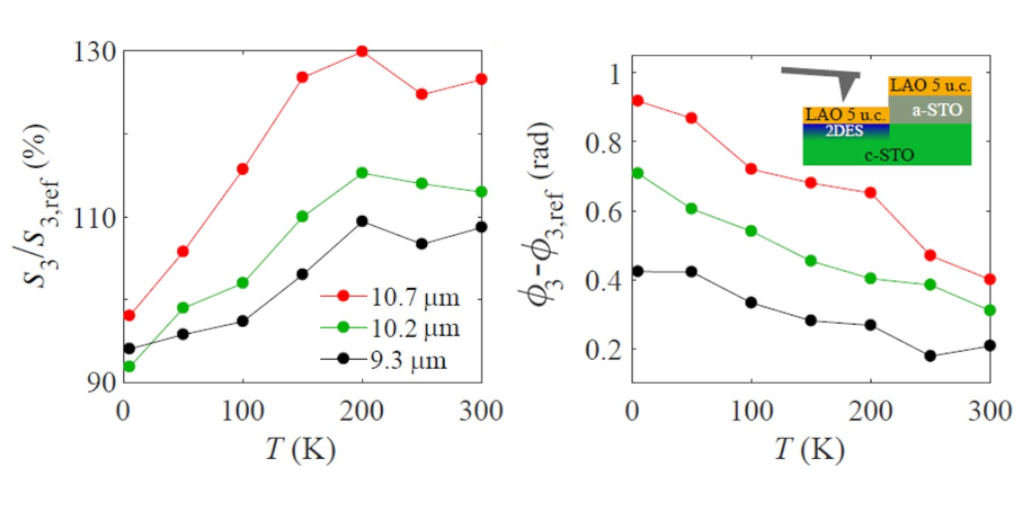
Robust skyrmions in conducting crystal
Racetrack memory with skyrmions has been envisaged as a novel spintronic device. Main challenge for its implementation are defects in suitable conducting ferromagnets. Moreover, Racetrack memory with Néel skyrmions would be more energy-efficient than Racetrack memory with Bloch skyrmions. Therefore, researchers have been focusing on Néel skyrmions, which predominantly appear on interfaces in thin films, usually accompanied by defects. Now, the group of Stuart Parkin at Max Planck Institute for Microstructure Physics (Germany) reported the first observation of Néel skyrmions in a bulk conducting crystal. They exhibit stability over a wide range of temperature and magnetic field, as well as tunability of their size with the thickness of the crystal. Such robustness of skyrmions, that were imaged by an attoAFM I cooled down by an attoLIQUID2000 cryostat, makes their host material (PtMnGa) promising for RM devices. As PtMnGa is of a class of highly tunable compounds their findings mark a first step towards tailored skyrmion properties for future spintronic applications.
This measurement was realized with the attoAFM I.
Further reading:
A.K. Srivastava et al., Advanced Materials 32, 1904327 (2020)
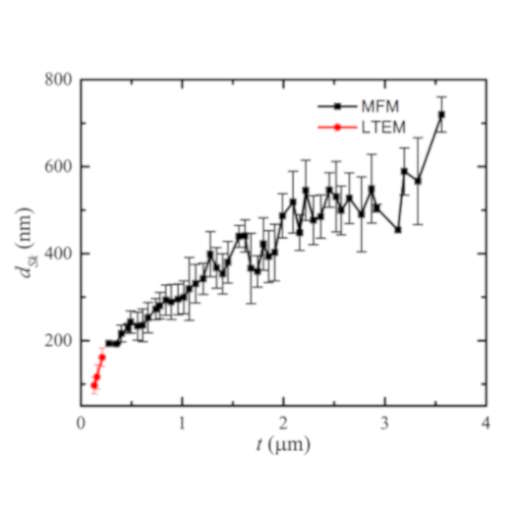
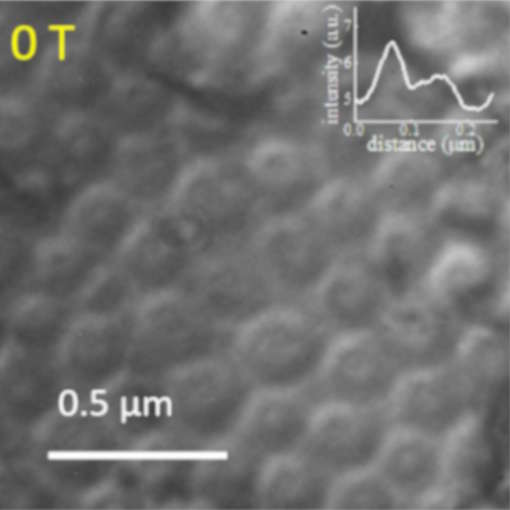
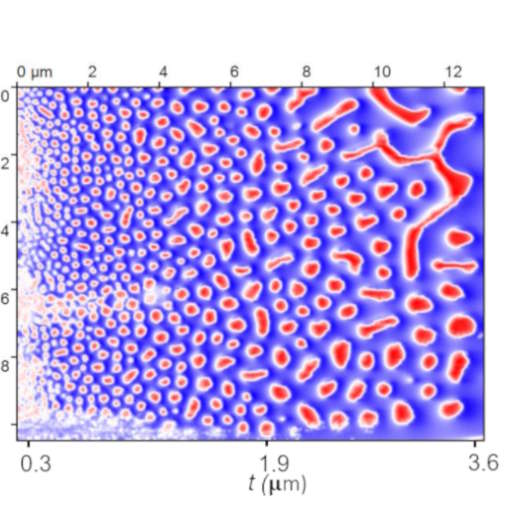
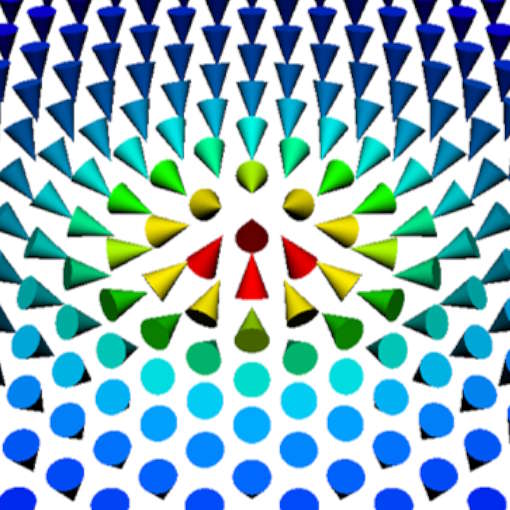
Angle-dependent characterizations of materials at mK temperatures
attocube's rotators offer a way to use the full magnetic field of a 1D magnet for field-angle dependent transport measurements at the sample. This benefit is used by the group of Anne de Visser at the Van der Waals - Zeeman Institute (University of Amsterdam, NL) in two setups with an ANR51 and an ANRv220 both in a closed loop configuration.
Magnetotransport measurements as a function of the angle θ in the trigonal basal plane of the topological superconductor SrxBi2Se3 revealed a large two-fold anisotropy of the upper critical field Bc2. Such a rotational symmetry breaking of Bc2(θ) cannot be explained with standard models, and indicates unconventional superconductivity with an exotic order parameter. More about this work can be found at [1].
In the second setup a home-built compact dilatometer was mounted on the ANRv220 in a dilution refrigerator. This was used to measure the anisotropy in the ferromagnetic and superconducting phase diagram of a single crystal of UCoGe by applying magnetic fields up to 14 T along the different crystallographic axes [2].
This measurement was realized with the ANR51/RES/LT - rotator (360° endless), and the ANRv220/RES/LT - rotator (360° endless).
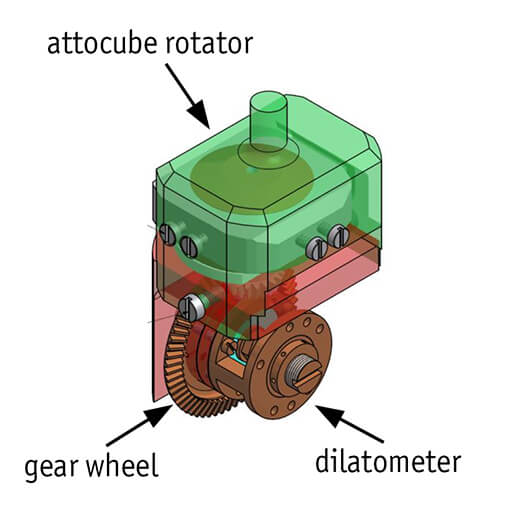
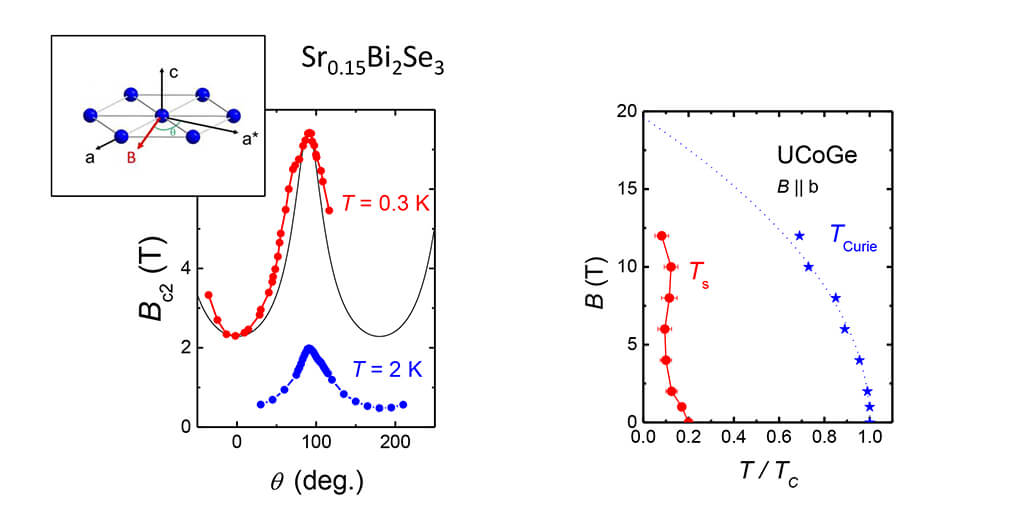
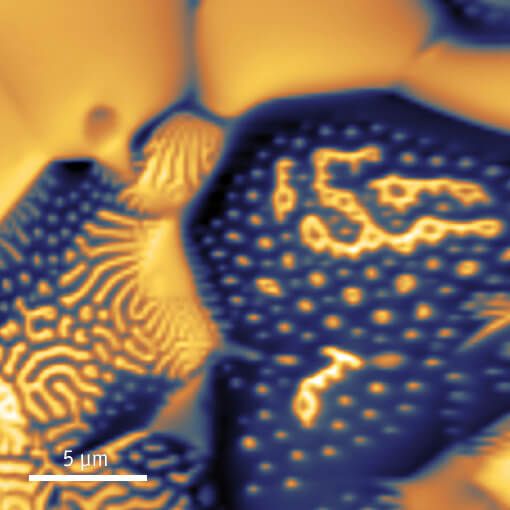
MFM for Optimization of Sintered Magnets
MFM image of a NdFeB sintered magnet with the nominal c-axis orientation perpendicular to the surface. The sample is in the remanent state but some surface grains show already magnetization reversal. High resolution imaging allows deeper insights into the magnetic reversal mechanism and the optimization of magnetic properties. Image size is 30x30µm2.
(Image courtesy of T. Helbig and O. Gutfleisch, Functional Materials Group, TU Darmstadt, Germany and Fraunhofer IWKS Hanau, Germany.)
This measurement was realized with the attoAFM I.

Vortex Barriers in Iron Pnictides
Iron-pnictide high-temperature superconductors are widely studied, but many open questions still remain. Using an attoAFM I for magnetic force microscopy, the group of O. Auslaender has studied twin boundaries and their interaction with vortices over a range of magnetic fields and temperatures. They find that stripes parallel to the twin boundaries repel vortices, effectively hindering vortex motion, and hence potentially affecting the critical current in such materials.
(Data courtesy of O. Auslaender, Technion, Israel)
This measurement was realized with the attoAFM I.
Further reading:
A. Yagil et al., Phys. Rev. B 94, 064510 (2016)
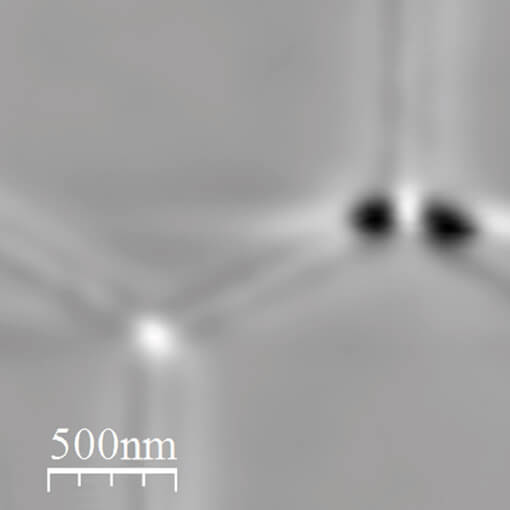
Low Temperature MFM on Artifical Spin Ice
Frustrated systems are intriguing for physicists since they possess highly degenerate ground states with non-zero entropy at 0 K, which can give rise to interesting new phenomena. A prominent example which has been widely studied in condensed matter physics is artificial spin ice. Using Magnetic Force Microscopy (MFM), the group of W. Branford (Imperial College, UK) have studied the magnetic reversal of a nanostructured permalloy honeycomb lattice, demonstrating the breakdown of the artifical spin ice regime at cryogenic temperatures and in high magnetic fields.
(Data courtesy of W.R. Branford, Imperial College, UK)
This measurement was realized with the attoAFM I.
Further reading:
K. Zeissler et al., Scientific Reports 6, 30218 (2016)
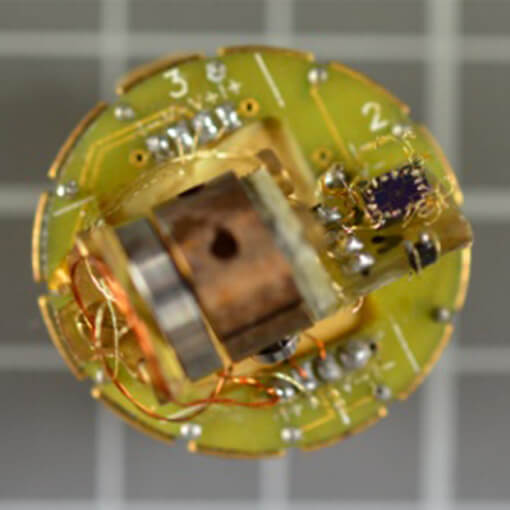
Transition from slow Abrikosov to fast moving Josephson vortices
attocube proudly presents his cutting edge application using the ANR31 rotator: They observed the formation of fast moving Josephson vortices, which depends critically on the angular alignment. Using the ANR31, they were able to rotate the sample below 2 K with better than 0.1° precision and could observe no drifts while sweeping temperature and magnetic field.
This measurement was realized with the ANR31/LT rotator made from Titanium and CuBe.
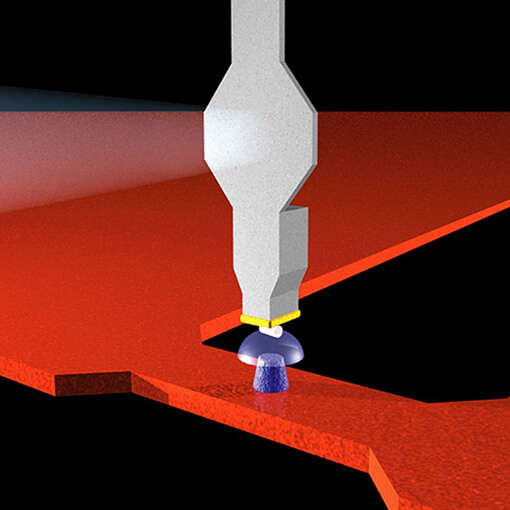
Magnetic Resonance Imaging of Nanoscale Virus at 300 mK
attocube’s ANPx51 positioners were used in an MRFM setup with the task to precisely and reliably position a magnetic tip and a copper nanowire to close proximity of an ultra-sensitive cantilever. The MRFM setup was applied to investigate and reconstruct the 1H spin distribution of Tobacco Mosaic Virus particles, representing a 100-million fold improvement in volume resolution over conventional MRI.
This measurement was realized with the ANPx51/LT - linear x-nanopositioner.
Visualization of Edge State in LPCMO Manganite Strip
Edge states that are induced by broken symmetry effects in two-dimensional electronic systems are in the focus of research. However, the question about the existence of edge states in strong correlated oxides was not fully answered until the group of Prof J. Shen (State Key Laboratory of Surface Physics and Department of Physics, Fudan University, Shanghai, China) demonstrated edge states in exactly these type of materials.
They used La0.325Pr0.3Ca0.275MnO3 (LPCMO) manganite strips and characterised these with an attoAFM Ixs with the upgrade for magnetic force measurements in a PPMS system at low temperatures. Experimental results including MFM images help to understand the edge states which are associated with the broken symmetry effect in manganites. The Figure shows MFM images under 9T and at temperatures of 10 K and 120 K. The scanned areas are 20?µm × 20?µm in the figures of the first row and 15?µm × 15?µm below.
Their findings prove the existence of novel edge state in strongly correlated oxides beyond the current two-dimensional electronic systems and opens a new understanding of broken symmetry effects in complex oxides.
(Image courtesy of K. Du, K. Zhang, and J.Shen, Fudan University, Shanghai, China)
This measurement was realized with the attoAFM I.
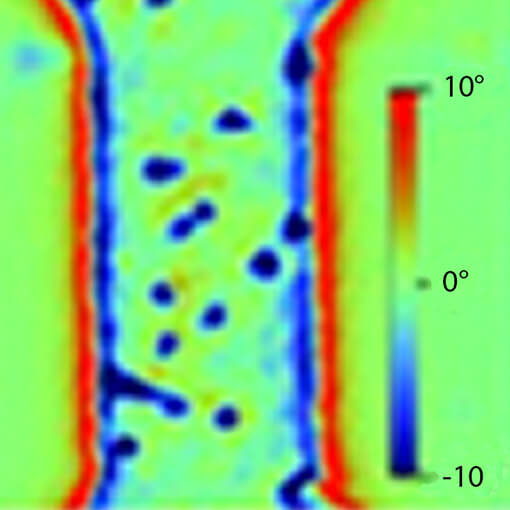
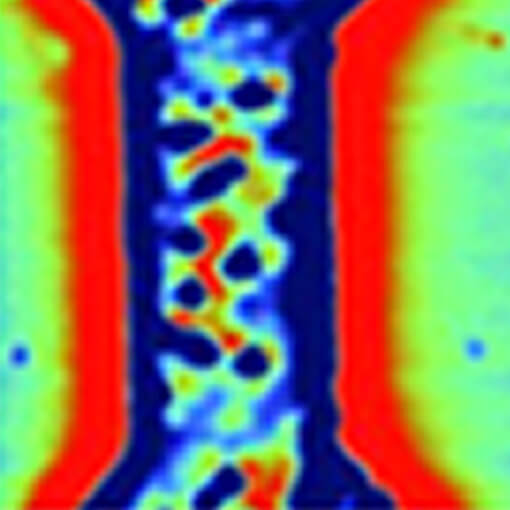
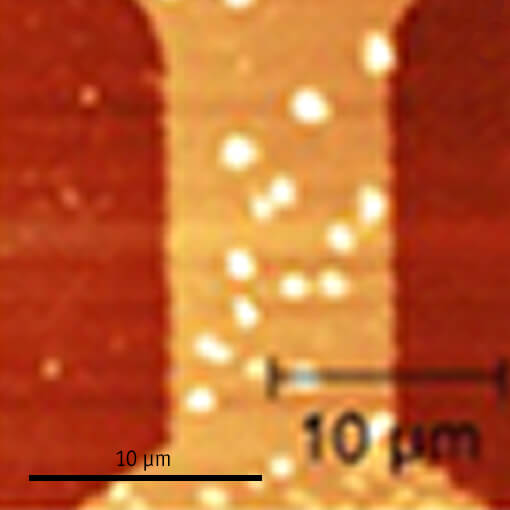
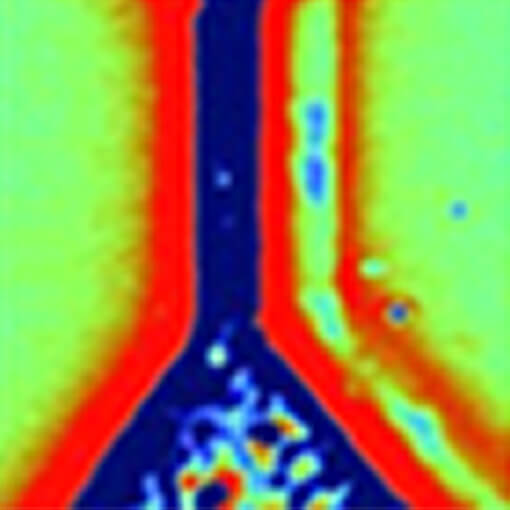
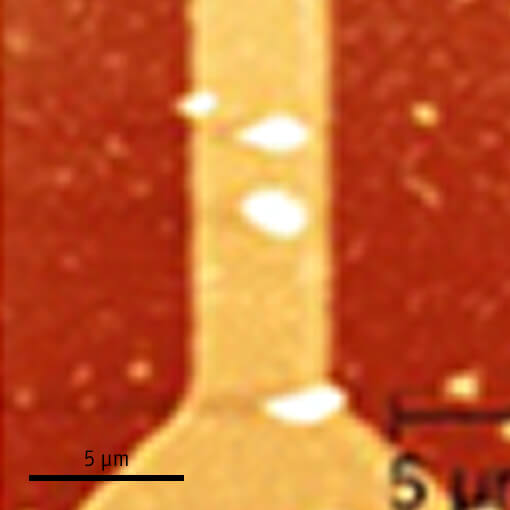
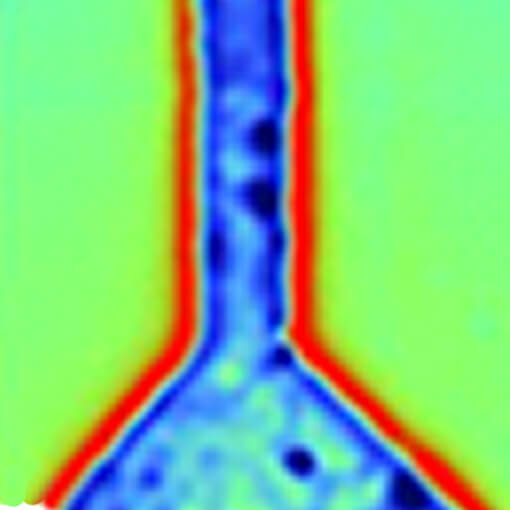
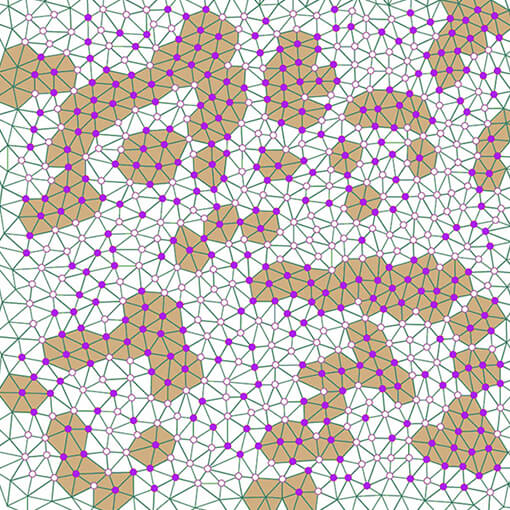
Vortex Imaging on Iron Pnictides using the attoMFM Ixs
In their latest publication, H. Yang and co-workers from the group of Prof. Hai-Hu Wen, from Nanjing University, present results on vortex studies on Ba1-xKxFe2As2 - a potassium-doped superconductor of the pnictide family. Since their discovery in 2008, the iron-pnictides have drawn intensive attention, not only because they have broken the monopoly of the cuprates but also because of strong pinning effects observed in certain pnictide-compounds. A vortex consists of a circular supercurrent, which allows for exactly one flux quantum each to penetrate the superconductor.
This measurement was realized with the attoAFM I.
Angle Dependent Magnetoresistance Measurement at Cryogenics
Due to the arbitrary orientation inherent to self-assembled materials on the substrate, typical characterization techniques such as magnetoresistance measurements conducted at cryogenic temperatures greatly benefit from the possibility to freely change the mutual orientation of external magnetic field and sample. Although this is easily possible e.g. by using a 3D vector magnet setup, the associated costs (>> 100 k$) are often prohibitive. Single axis sample rotator setups on the other hand not only require choosing either an out-of-plane or in-plane configuration prior to cooldown, but also put firm restrictions on certain measurements which rely on a precise orientation of the field e.g. perpendicular or parallel to an initially unknown direction along a sample structure. The perfect solution to such applications is attocube’s 3-dimensional rotator atto3DR.
Similar to a recent publication by C. H. Butschkow and co-workers from the group of Prof. Dieter Weiss (Univ. of Regensburg), magnetotransport measurements on individual GaAs/(Ga,Mn)As core-shell nanowires (top figure) have been conducted.
The center figure shows magnetoresistance at 5 T as a function of the angle between externally applied magnetic field and the nanowire axis for different rotation planes: (orange) in-plane rotation, referring to the SiO2 substrate plane, (green) out of plane (perpendicular) rotation with the long nanowire axis (typically 4 µm long and 100 nm in diameter) entirely in the rotation plane, and (blue) out of plane (transversal) rotation with the rotation plane transversal to the nanowire axis.
The bottom figure shows the normalized magnetoresistance as a function of the angle between externally applied magnetic field and the nanowire axis for various magnitudes of the external magnetic field.
(measured by C. Butschkow in collaboration with attocube application labs 2012; sample courtesy of C. Butschkow, University of Regensburg).
This measurement was realized with the atto3DR.
Further reading:
C. Butschkow et al., Phys. Rev. B 87, 245303 (2013)
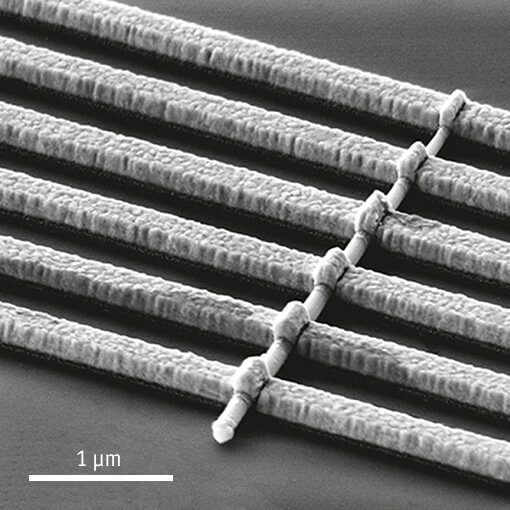
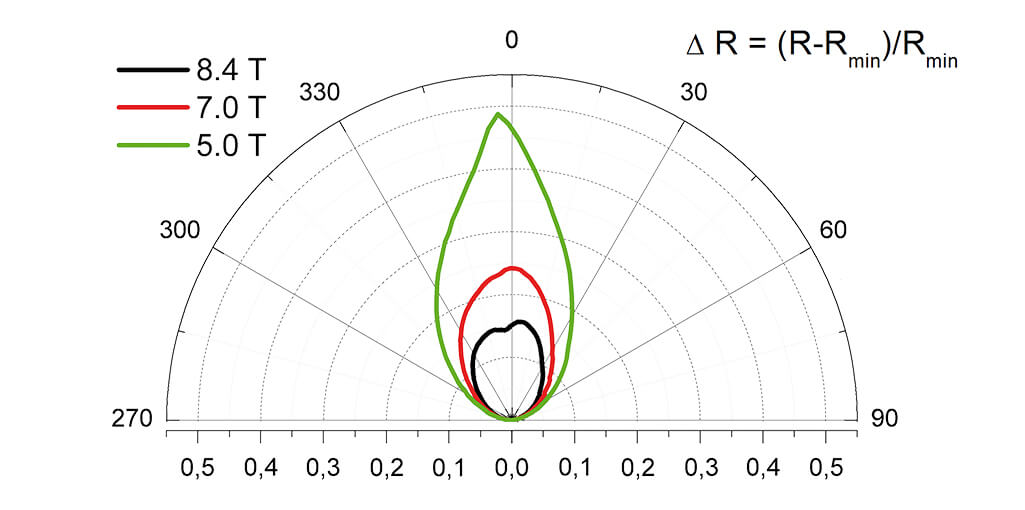
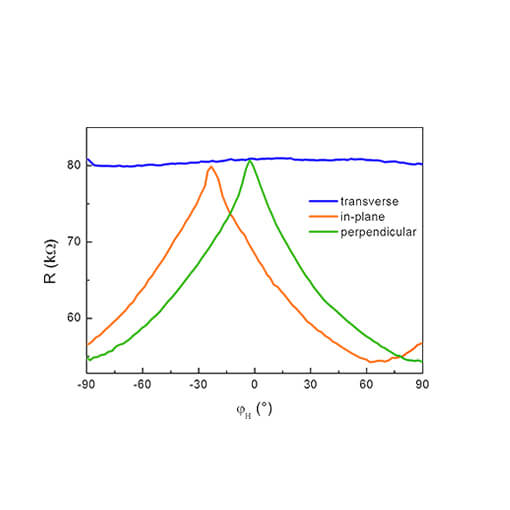
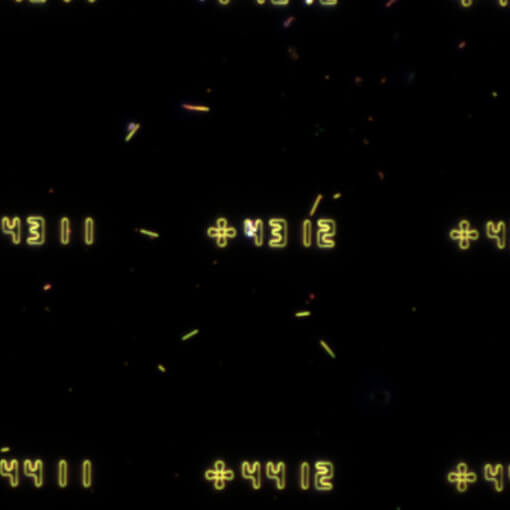
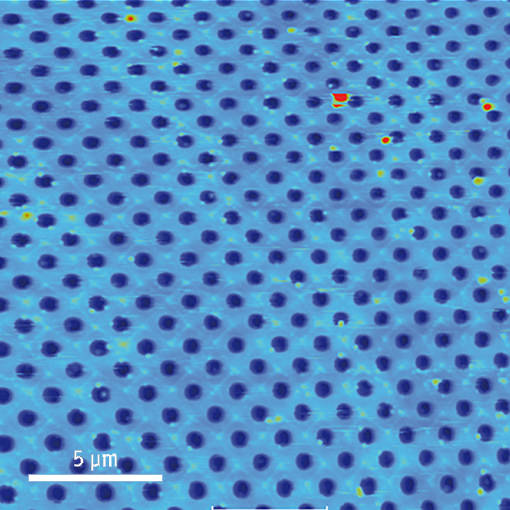
attoAFM I Mounted on Mixing Chamber
This scan above nicely demonstrates the stability of a complete system, an attoAFM I together with a LD400 cryo-cooler from BluFors Cryogenics. For this 25 x 25 µm2 (800 x 800 pixel) scan, the pulse-tube cooler was enabled the whole time. The temperature was stable at ≈40 mK measured at the mixing chamber - it was slightly higher due to the higher scan speed of close to 1 µm/s.
(attocube applications in collaboration with BluFors Cryogenics, 2014)
This measurement was realized with the attoAFM I.
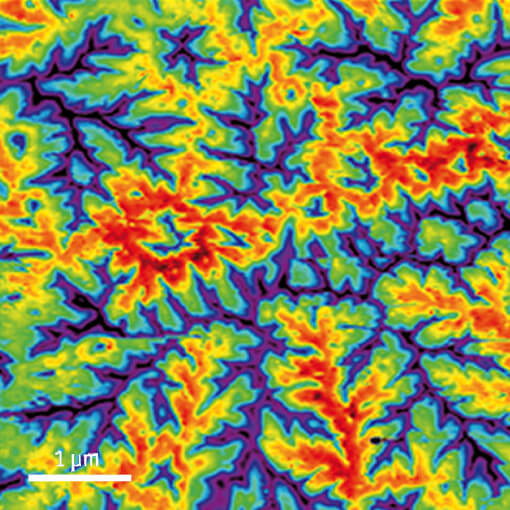
MFM on Co Doped Mn2Sb Single Crystal
Magnetic domain structure in the ferrimagnetic state of Co doped Mn2Sb single crystal imaged using an attoAFM Ixs Magnetic Force Microscopy (here at 290 K). The image was taken in constant distance mode with the height above the sample surface set to 50 nm. The area shown in the figure corresponds to 15 µm x 15 µm with a size of 800 x 800 pixel.
(Image courtesy of Rajeev Rawat, UGC-DAE Consortium for Scientific Research, Indore, India)
This measurement was realized with the attoAFM I.
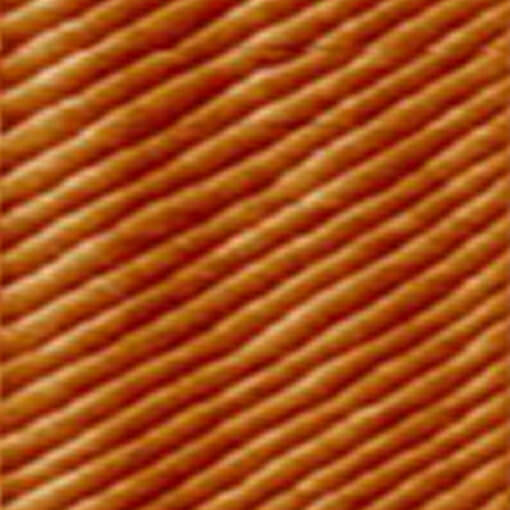
Link between bulk electric and microscopic magnetic properties of LaPryCaMnO
A research team around Prof. Jian Shen from the low-dimensional material physics group at Fudan University (China) has studied extensively thin films of manganites (LaPrCaMnO on SrTiO). This family of materials has very unique electronic and magnetic properties, which can be tailored for all sorts of spintronic and electronic applications.
Their findings have been published in a series of 5 papers, in which they have been using an attoAFM/MFM Ixs in an attoDRY1000 & PPMS to characterize the microscopic origins of a magnetic and electronic phase separation at low temperatures and in high magnetic fields controlled by nanopatterning as well as shedding light on the connection between bulk electric and microscopic magnetic properties of such films.
This measurement was realized with the attoAFM I.
Switching the Magnetic Vortex Core in a Single Nanoparticle
Manipulating magnetic nanostructures is not only scientifically interesting but also offers great potential in nonvolatile data storage devices and spintronic applications.
Elena Pinilla-Cienfuegos and co-workers used a low temperature variable field attoAFM/MFM I to observe and manipulate the magnetic vortex states in 25nm diameter molecular-based magnetic nanoparticles. They found that the vortex core can be switched by the application of a very small magnetic field.
This measurement was realized with the attoAFM I.
Further reading:
E. Pinilla-Cienfuegos, et al., ACS Nano 10 (2), 1764–1770 (2016)
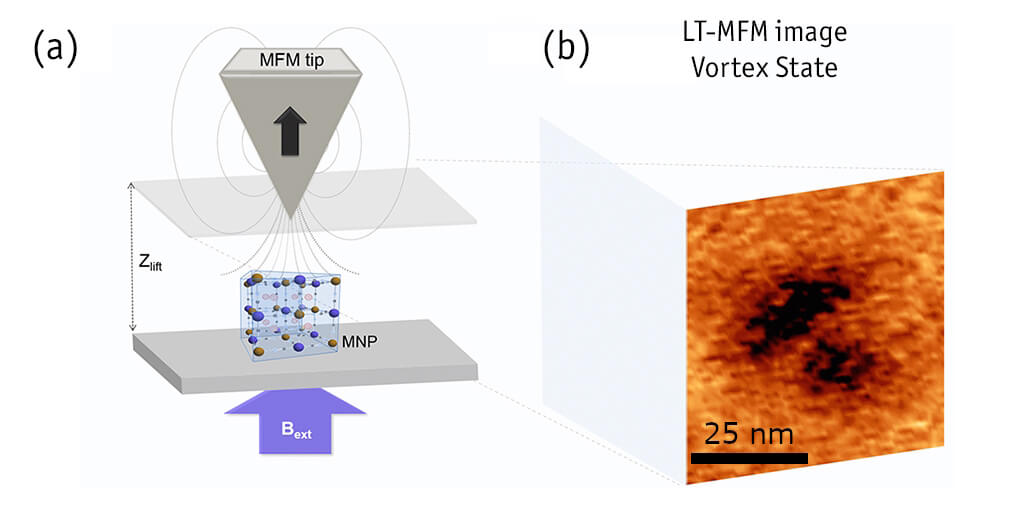
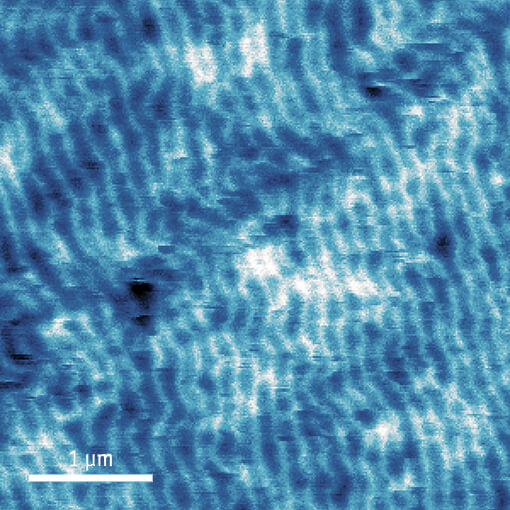
Helimagnetic Phase of FeCo0.5Si0.5
Real space imaging of exotic magnetic phases provides a level of understanding that cannot be achieved with indirect techniques. The figure on the left shows one of the first observations of a helimagnetic phase using the attoMFM I. The periodicity of the stripes is around 100 nm. This phase is of particular interest because of its proximity to a skyrmion phase. Skyrmions are exotic magnetic excitations, studied extensively because of their potential use in spintronic applications. The measurement was performed on a FeCo0.5Si0.5 sample at cryogenic temperature (4K) using an attoMFM I inside a liquid helium cryostat (attoLIQUID).
(attocube application labs, 2013; sample courtesy of A. Bauer and C. Pfleiderer, Technical University of Munich, Garching, Germany)
This measurement was realized with the attoAFM I.
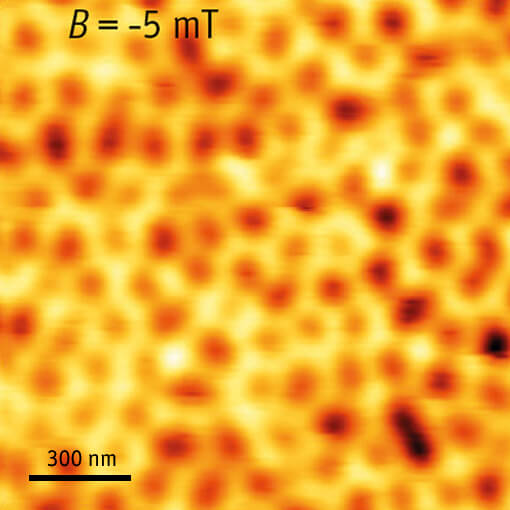
MFM imaging of a Skyrmion lattice
In collaboration with Jan Seidel from UNSW Sydney, A. Bauer & C. Pfleiderer, TU Munich we have successfully imaged the elusive Skyrmions and their magnetic field evolution in the attoDRY1000 cryostats using the attoAFM/MFM I. See what’s possible nowadays with our sophisticated commercial instruments!
This measurement was realized with the attoDRY1000, and the attoAFM I.

